For decades, marketers and UX designers have relied on user personas—fictional characters based on audience research—to guide everything from product design to messaging strategy. Traditionally, these personas were static snapshots built from demographic surveys, anecdotal feedback, or past performance data.
But in today’s fast-paced digital environment, that’s no longer enough.
Enter synthetic personas: AI-generated user models that simulate real behaviors, preferences, and decisions. These dynamic profiles are created and refined by machine learning algorithms, offering marketers a revolutionary way to predict and respond to user needs in real time. From hyper-personalized campaigns to user experience testing, synthetic personas are changing how we approach customer research—forever.
What Are Synthetic Personas?
Synthetic personas are virtual representations of target users generated by artificial intelligence. Unlike traditional personas, which are often generalized and manually built, synthetic personas draw from vast and varied data sources to reflect real, evolving user behavior.
Using behavioral data, digital footprints, and predictive algorithms, synthetic personas provide marketers with insight into not just who their customers are, but how they think, what they want, and when they’re likely to act.
Key characteristics of synthetic personas:
- Data-driven and dynamically updated
- Capable of simulating real-time decisions
- Built using machine learning models that analyze patterns across large datasets
- Scalable for large, segmented, or niche audiences
How AI Builds Predictive User Models
At the core of synthetic personas is artificial intelligence, particularly machine learning techniques like clustering, neural networks, and behavioral modeling. These models digest inputs from sources such as:
- Web analytics and browsing behavior
- CRM and transaction history
- Social media activity
- Survey data and customer feedback
- IoT and mobile app usage
By identifying behavioral patterns and correlations, AI generates models that not only reflect current user characteristics but can also predict future actions. Some tools even simulate how users will respond to changes in product offerings, content strategies, or pricing models—before any real-world testing occurs.
Popular tools in the space include:
- Delve AI – for real-time persona generation based on website traffic
- UneeQ – for creating conversational AI personas
- Quantilope – for automating consumer research and segment analysis

Why Synthetic Personas Matter for Marketers
In an era where personalization is the expectation, synthetic personas provide a competitive edge. They empower brands to:
- Deliver hyper-personalized messaging across campaigns and channels
- Identify micro-segments previously invisible in traditional datasets
- Optimize campaigns quickly, with faster test-and-learn cycles
- Reduce reliance on surveys and time-consuming focus groups
By simulating user reactions to content, offers, and UI changes, synthetic personas allow marketers to fine-tune strategies before launching to a broader audience—minimizing risk and maximizing ROI.
Applications in UX Design and Digital Experience
Synthetic personas are also transforming how digital products and experiences are tested and optimized. Rather than relying solely on in-person testing or anecdotal feedback, designers can:
- Simulate how different persona types navigate a website or app
- A/B test messaging or design elements with virtual users
- Test edge cases (e.g., users with accessibility needs or extreme preferences)
- Design inclusively for underrepresented demographics
In many cases, synthetic personas serve as a powerful pre-validation layer before real-world UX testing.
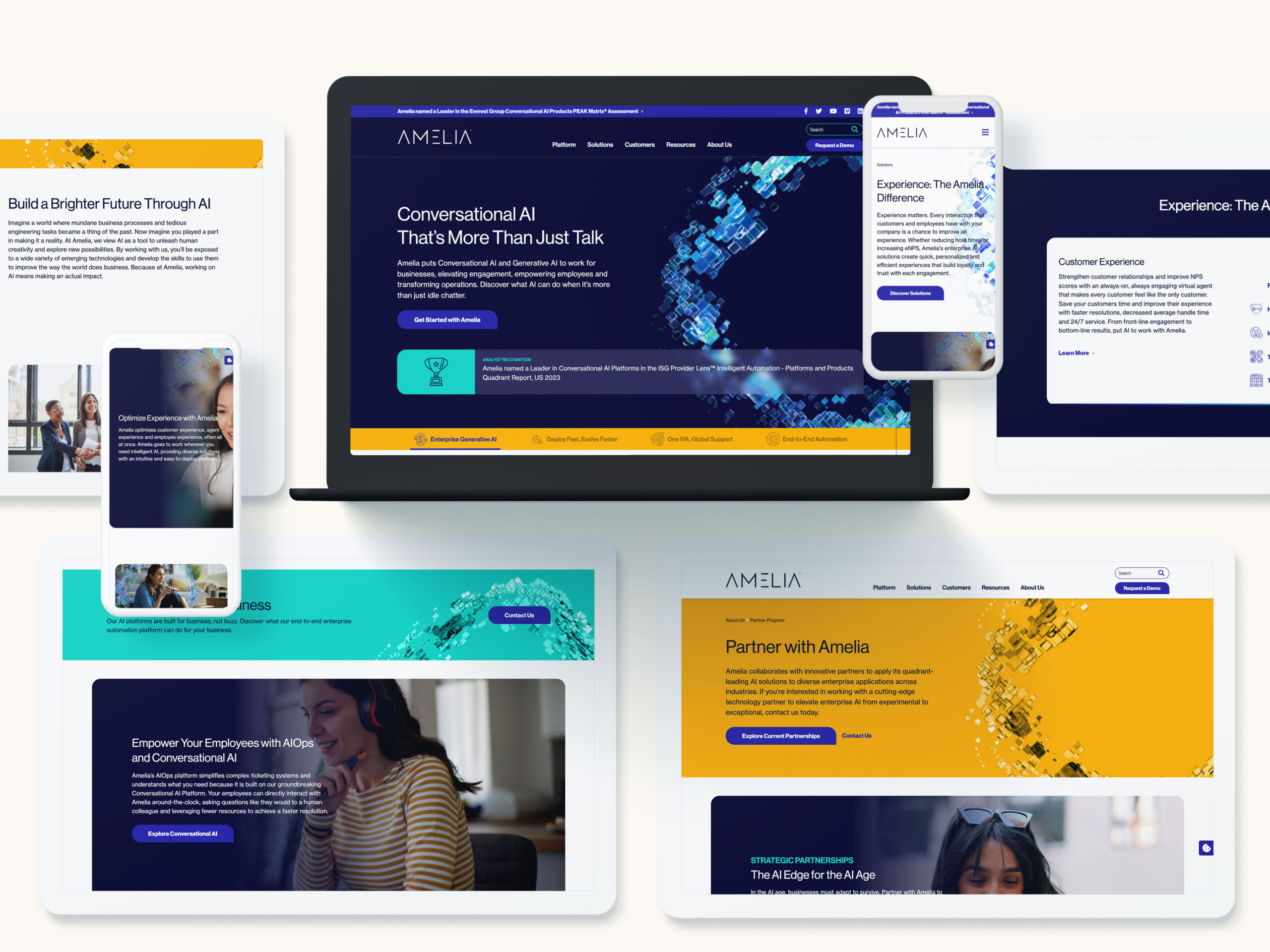
Ethical and Practical Considerations
As with any AI-driven solution, there are considerations to keep in mind:
- Data bias: Synthetic personas are only as accurate as the data used to train them. Biases in the source data can lead to flawed outputs.
- Privacy and transparency: Brands must ensure their synthetic persona modeling adheres to data privacy regulations and ethical standards.
- Human oversight: Synthetic personas should complement—not replace—real user insights. They’re most powerful when used alongside traditional research methods.
Knowing when and how to deploy synthetic personas is essential to ensure insights remain grounded in reality.
How Brands Can Get Started with Synthetic Personas
Ready to explore AI-generated personas? Start by taking these steps:
- Audit your data – Ensure you have clean, structured behavioral data to feed AI models.
- Define your goals – Are you trying to improve UX, refine messaging, or explore new audience segments?
- Choose the right tool – Platforms like Delve AI, UneeQ, or even custom-built ML models can fit different use cases.
- Validate results – Cross-check AI-generated insights with actual user research or campaign performance.
- Iterate and evolve – Like real users, synthetic personas should evolve as your audience and offering change.
The Future of AI-Driven Customer Understanding
Synthetic personas are just the beginning. As generative AI continues to advance, brands will soon be able to create digital twins of customers—virtual users who mirror real-world behavior in real time. These twins will power everything from product prototyping to automated customer service interactions, making user research not just faster, but predictive and adaptive.
For industries like B2B SaaS, cybersecurity, government contracting, and healthcare, the implications are massive. AI can help brands navigate complex buyer journeys, long sales cycles, and diverse stakeholder personas—all while maintaining a data-driven edge.
Want to Reach the Right Personas—Real or Synthetic?
At Bluetext, we help brands unlock the power of AI to better understand, engage, and convert their audiences. Whether you’re exploring synthetic personas or refining your digital experience with real user data, we can help.
Contact us to explore how AI-generated personas can sharpen your messaging and drive measurable results.
The relatively rapid ascension of AI companies selling into the U.S. public sector, including Palantir, Shield AI, and Anduril speaks to a new reality. This isn’t to say that Palantir is new to the market – they’ve been around for two decades – but its brand awareness has been turbocharged by a number of factors the past several months.
The new Administration and the transitioning generation of contract vehicle decision makers are no longer flocking to the biggest names by default. They are looking for AI providers able to prove they can deliver, innovate with impact, and support the mission.
For AI startups and fast-growth firms, this represents a unique but not indefinite opportunity to accelerate growth for their public sector business.
With greater opportunity comes greater competition. The GenAI boom has created both excitement and skepticism across government sectors. Agencies are inundated with promises from AI vendors to deliver disruptive transformation, which risks diluting brand credibility for the entire segment. In this noisy environment, startups must not only be credible, but also visible and clearly differentiated to avoid being lost in the shuffle.
A deliberate PR strategy—sequenced around real validation milestones—can shorten that credibility curve and help a young AI brand rise above the noise from RFI to award.
To examine how a newer AI entrant can establish bona fides with a government audience, we’ll look at recent outcomes from Bluetext’s PR process, share a successful B2G Gen AI client project, and take-aways any GenAI startup can adopt.
Bridging the Credibility Gap Facing AI Startups
Federal decision-makers are skeptical of inflated AI claims, and amid a flood of new entrants and overhyped promises, it’s harder than ever for startups to stand out. The market is saturated not just with vendors, but with overlapping technologies that make it difficult for evaluators to separate truly differentiated capabilities from generic buzzwords.
As a result, agencies often default to vendors that can show IL4/IL5 or FedRAMP High status right out of the gate—objective signs of readiness that cut through the noise.
Multi-stakeholder buying units (CIO, CISO, PMO, end-user lead) create a “trust bottleneck”—one skeptic can stall an entire procurement.
Lengthy accreditation timelines mean younger firms often hit cash-flow turbulence before their first task order, making continuity risk a hidden evaluation factor.
So how does a new AI vendor shift from unknown to trusted? The answer lies in a deliberate communications strategy that builds visibility and credibility at every stage of the government buyer journey. One example of this approach in action is Bluetext’s work with a Gen AI startup that was less than two years old at time of engagement: Ask Sage.

Bluetext’s Approach to Breaking Through and Earning Trust
Ask Sage was still new in the market—even with a well-known founder—so the team needed visibility in trusted defense-tech outlets to open doors with contracting officers and integrators.
Striking a balance between one major announcement and a scattershot approach, Bluetext mapped out a rolling sequence of milestones—each one referencing the credibility earned from the last—and calendared outreach in 4- to 6-week increments so momentum never stalled. This deliberate drumbeat keeps earlier wins in view while layering fresh proof points, steadily deepening trust with agency evaluators.
Key Milestones:
- DoD IL5 Authorization – Became the first generative-AI platform to reach IL5, paving the way for secure adoption across the Department of Defense and its industrial base.
- U.S. Army cARMY Deployment – Announced the Army’s initial rollout of the startup’s solution on the cARMY cloud, highlighting accelerated software, acquisition, and cyber workflows at IL5.
- Series A Funding – Bluetext supported a Series A raise that underscored market confidence and enabled product expansion for public-sector customers.
Media Coverage Highlights: DefenseScoop, Federal News Network, AFCEA Signal, Breaking Defense, Defense News, and FedWeek covered the technical milestones, while Washington Business Journal, WSJ Pro VC, Fortune Term Sheet, and Potomac Tech Wire reported on the funding news.
Consistent trade-press visibility around each milestone gradually strengthened credibility with agency stakeholders and partners, positioning the startup for continued pipeline growth.
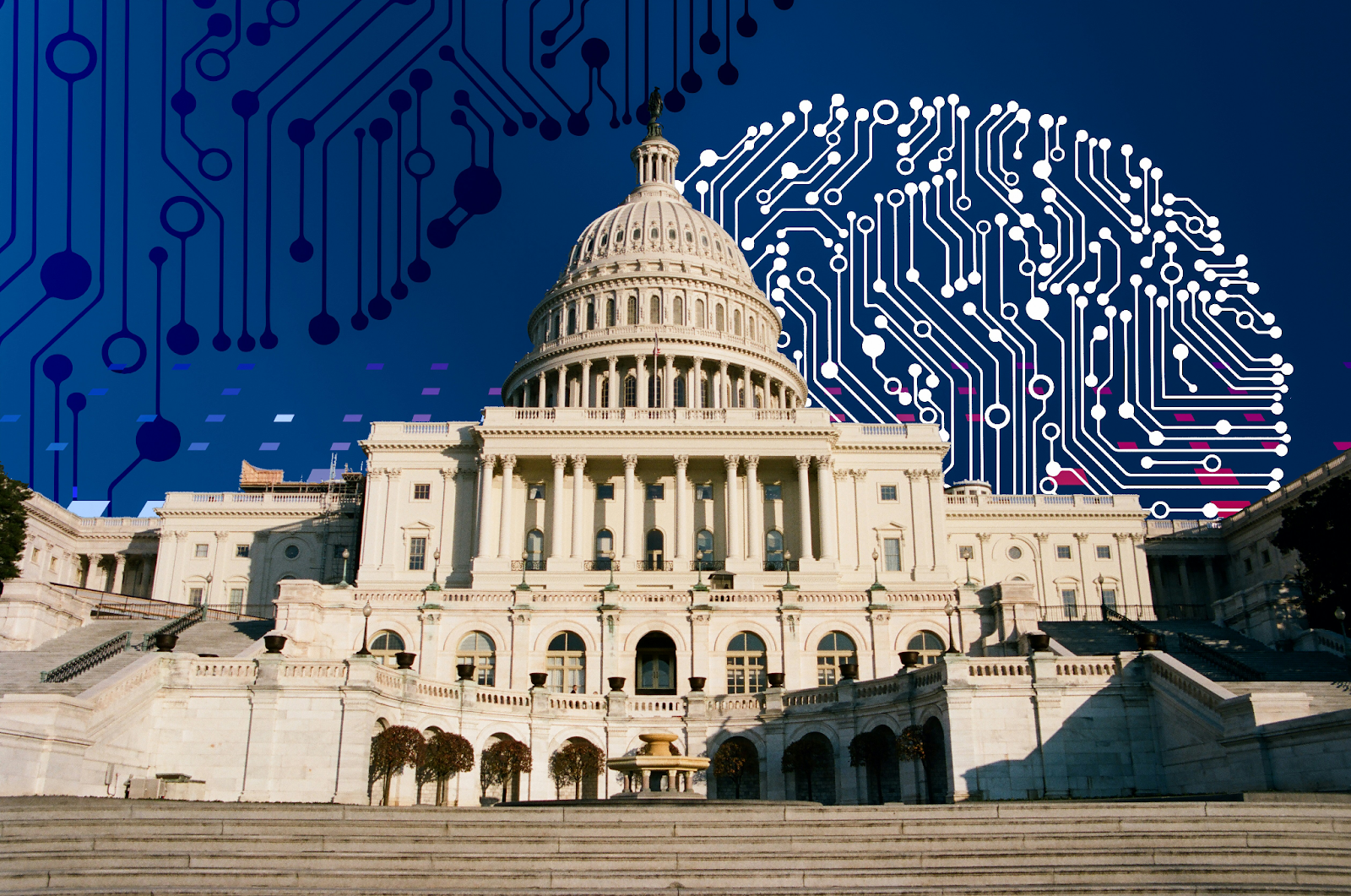
Actionable Tactics AI Startups Can Apply Today
- Build a “Trust Timeline” deck that aligns accreditation goals with key events — moments likely to drive spikes in media attention, such as budget hearings or major conferences. Share this timeline internally across teams to keep messaging aligned and timed for maximum exposure. This helps ensure that every milestone is leveraged at the moment when government buyers are most attuned to new solutions.
- Pair press releases with thought leadership pieces that contextualize why the milestone matters for agency outcomes. By coupling news with perspective, startups can add a human voice to their achievements and explain the downstream impact on mission execution. This anticipates stakeholder concerns and builds narrative continuity from one announcement to the next.
- Share milestone collateral with reseller and integrator partners so they can amplify your story in their updates and proposal volumes. While the integrator role is evolving post-DOGE, they still play a key role in shaping how new tech is perceived by agencies, and aligned messaging helps reinforce your credibility through their trusted channels. This tactic turns partners into amplifiers, extending your visibility even in closed-door evaluation environments.
- Track Share of Voice quarterly against three closest primes, and use gaps to inform the next proof-point you must surface. Understanding where your voice is absent—whether in key outlets, industry narratives, or buyer conversations—helps prioritize the next move. Strategic PR fills those whitespace opportunities with proof that counters doubt and strengthens your brand’s position.
Government stakeholders scrutinize AI vendors more closely than ever, so verified accreditations and real-world results carry far more weight than bold promises. Sequence key proof points and deliver them through the outlets your buyers trust, and you can position your startup on the shortlist well before an RFP is released.
Ready to map your own milestone-driven communications plan? Contact Bluetext to get started.
As artificial intelligence (AI) continues to revolutionize the digital landscape, a new form of optimization has emerged—Answer Engine Optimization (AEO). Unlike traditional Search Engine Optimization (SEO), which focuses on improving website rankings on keyword-based search engines like Google, AEO targets optimization for AI-powered generative engines such as ChatGPT, Bing Chat, and other conversational AI systems.
Generative engines generate responses, summaries, and content dynamically, relying heavily on the context and quality of the underlying data. AEO is about tailoring your digital assets—websites, content, and metadata—to be more accessible, relevant, and valuable for these AI models. This new form of optimization is critical as more users turn to AI assistants for answers rather than traditional search results.
How AEO Differs from Traditional SEO
Traditional SEO:
- Focuses on keywords, backlinks, site structure, and user experience to improve rankings on search engines.
- Relies on crawlers and indexing mechanisms to understand and rank static content.
- Users typically scan a page or click through links to find answers.
Answer Engine Optimization (AEO):
- Focuses on the context, clarity, and structured data that AI models use to generate natural language responses.
- Requires content designed for AI comprehension, including well-structured, authoritative, and factual information.
- Encourages semantic richness and integration of data sources that feed generative models.
- Often involves optimizing for “featured snippet” style answers and conversational formats.
Why AEO Matters for Companies
With generative AI becoming a primary way people seek information, companies that fail to optimize for AEO risk losing visibility in these new AI-powered interfaces. AEO can help brands:
- Gain visibility in AI chat results and voice assistants.
- Improve content discoverability in conversational search contexts.
- Build brand authority in emerging AI ecosystems.
- Capture new leads and customers by providing precise, AI-friendly answers.
Top Tips to Optimize Your Company for AEO
1. Create Clear, Structured, and Concise Content
Generative engines prefer content that is easy to parse and understand. Use headings, bullet points, and numbered lists to break down complex topics clearly.
2. Incorporate Semantic Keywords and Natural Language
Instead of focusing solely on exact-match keywords, integrate related terms and natural conversational phrases to align with how people ask questions verbally.
3. Leverage FAQs and Q&A Sections
Frequently asked questions and their answers help AI models quickly extract relevant information, increasing chances of being cited in generative responses.
4. Use Schema Markup and Structured Data
Enhance your content with schema.org markup to provide explicit metadata about your business, products, services, and articles, improving AI comprehension.
5. Publish Authoritative and Trustworthy Content
AI engines prioritize high-quality, fact-checked, and trustworthy content. Make sure your content is well-researched, cites credible sources, and is regularly updated.
6. Optimize for Voice Search and Conversational Queries
Many generative engines power voice assistants. Write content that answers questions naturally and succinctly to capture voice-based queries.
7. Monitor and Adapt to AI Algorithm Updates
Stay informed about changes in generative AI technology and adapt your content strategies accordingly. AEO is an evolving field, so flexibility is key.
AEO vs. SEO: Should You Shift Your Focus?
While AEO is gaining traction, it does not replace SEO—it complements it. Companies should continue strong SEO practices while gradually integrating AEO strategies to future-proof their digital presence. The synergy between traditional SEO and AEO will ensure you reach audiences across all search and AI platforms.
Embrace AEO to Stay Ahead in the AI Search Era
Answer Engine Optimization (AEO) represents the next frontier of digital marketing in a world increasingly influenced by AI-driven search and content generation. By understanding AEO and implementing these optimization tips, companies can enhance their visibility, credibility, and engagement with users in this rapidly evolving ecosystem.
If you’re ready to optimize your content for the future of AI search and generative engines, contact Bluetext today. We specialize in helping companies navigate new digital frontiers with smart, data-driven marketing strategies.
Rebranding isn’t just about a fresh logo or a catchy new name—it’s about rewriting your story for the audiences who matter most. For businesses that count the government as a key customer base —whether federal, state, or local—a rebrand presents a unique opportunity to sharpen perception, highlight mission alignment, and reinforce credibility. But if you’re not strategically managing the public conversation and weaving PR strategy into the rebrand on the front end, even the best rebrand can go unnoticed or misunderstood. That’s where a well-timed public relations strategy makes all the difference.
At Bluetext, we approach B2G rebranding as a comprehensive effort, where PR is just one part of a much larger, integrated strategy. From brand architecture and messaging to creative execution, stakeholder engagement, and go-to-market planning, we help organizations build brands that resonate with the audiences that matter most. B2G PR amplifies that effort externally, telling the right story in the right places—with credibility, clarity, and purpose.
1. Internal Alignment Comes First
A successful B2G rebrand begins long before it reaches the public eye – it starts within your organization. Too often, brands rush to unveil a new identity externally without ensuring the people who represent the brand every day understand it, believe in it, and can articulate it with confidence. This is especially important in the B2G space, where contracts are won and lost on credibility, consistency, and trust.
Your employees are your first—and often most influential—brand ambassadors. If your team can’t clearly express what the rebrand means and why it matters, neither will the program officers, contracting leads, or agency buyers they interact with. Aligning internally sets the tone for every customer interaction, proposal, and pitch that follows.
Here’s how to make sure your rebrand starts strong from the inside out:
- Equip teams with messaging toolkits, elevator pitches, and FAQs so they can speak with clarity and consistency across functions. Whether they’re in sales, capture, customer service, or delivery, they should all be telling the same brand story.
- Host internal town halls or team sessions to explain the rebrand’s purpose and preview rollout plans. These aren’t just informational—they’re opportunities to build buy-in and enthusiasm from within.
- Position your workforce as your strongest brand ambassadors, especially when engaging with government customers who value institutional knowledge and continuity. The more confident your team is in the brand, the more credibility you’ll earn externally.
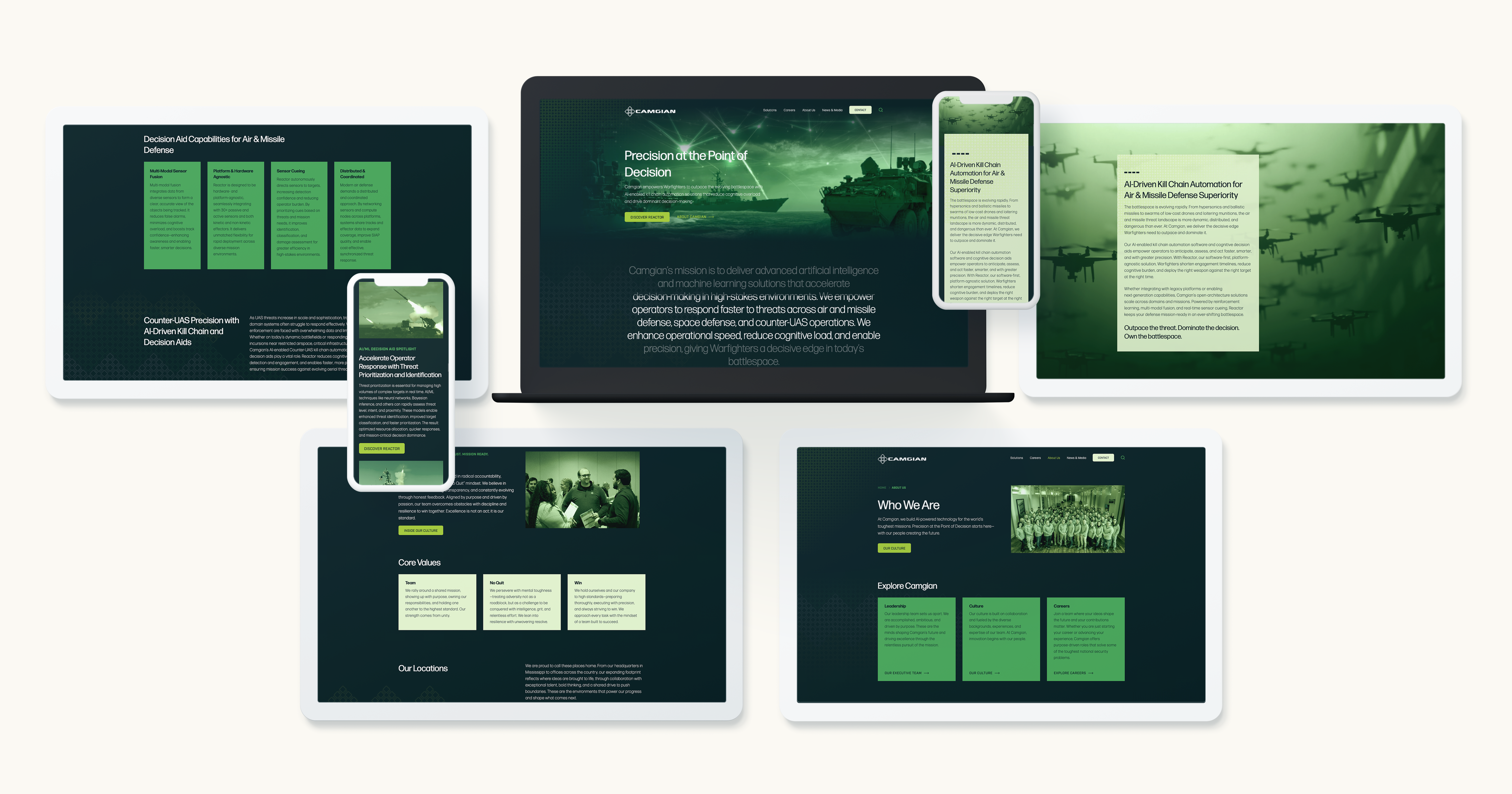
2. Rebrand Must Align To Outcome-Based Environment
B2G brands can’t chase every shift in the wind when it comes to what government buyers are looking for. That said, the Department of the Government Executive (DOGE) and Administration priorities have ushered in a significant and tangible sea change that requires brands to adapt key messages and market positioning.
Yes, digital transformation, cyber security, AI, and other capability areas still matter, but it has become less about “what you do” and more about “show me the impact of what you’ve done and what you can do.” This means messaging tied to outcomes, efficiencies, transparency, and provable innovation to demonstrate your brand recognizes the evolving priorities of the agencies you serve.
- Messaging should be value-driven, not vanity-driven. Make your story about how you help agencies meet their missions—faster, smarter, and more efficiently.
- Acknowledge recent reforms like DOGE’s emphasis on transparency, digitization, and responsible vendor engagement. Demonstrating awareness of these priorities positions your brand as forward-looking and informed.
- Treat the rebrand as a proof point of alignment, not just aesthetics. Buyers want to see operational benefits and relevance, not just polished creative.
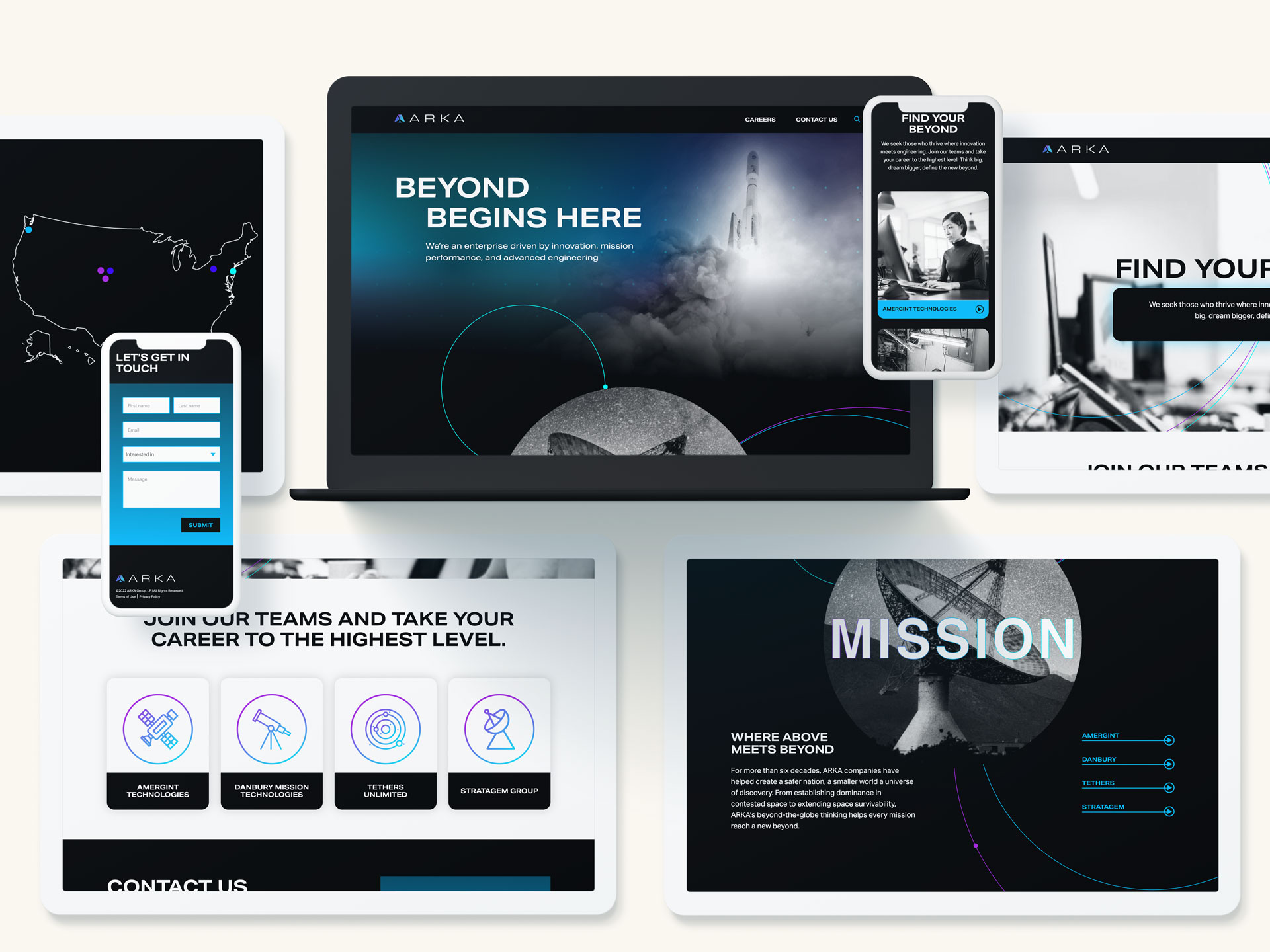
3. Building Strategic Narrative Anchors
Maximizing a rebrand requires building a compelling, coherent brand story to support the new visual and messaging elements. For B2G companies, that story must be grounded in the missions that matter to your government customers. Strategic messaging is what transforms a brand from a vendor into a true partner.
This narrative should be more than marketing. It’s a positioning tool that connects your solutions to the public priorities of the agencies you serve—from modernizing infrastructure to protecting critical systems. Without this anchor, your rebrand may look good but feel hollow.
- Tie your messaging to agency macro themes like resilience, service delivery, modernization, or public trust.
- Use the rebrand as an opportunity to reposition your company as a mission-aligned partner, not just a technical provider.
- Support your story with real-world proof points. Whether it’s case studies, data, or testimonials, you need more than words to back up your claims.
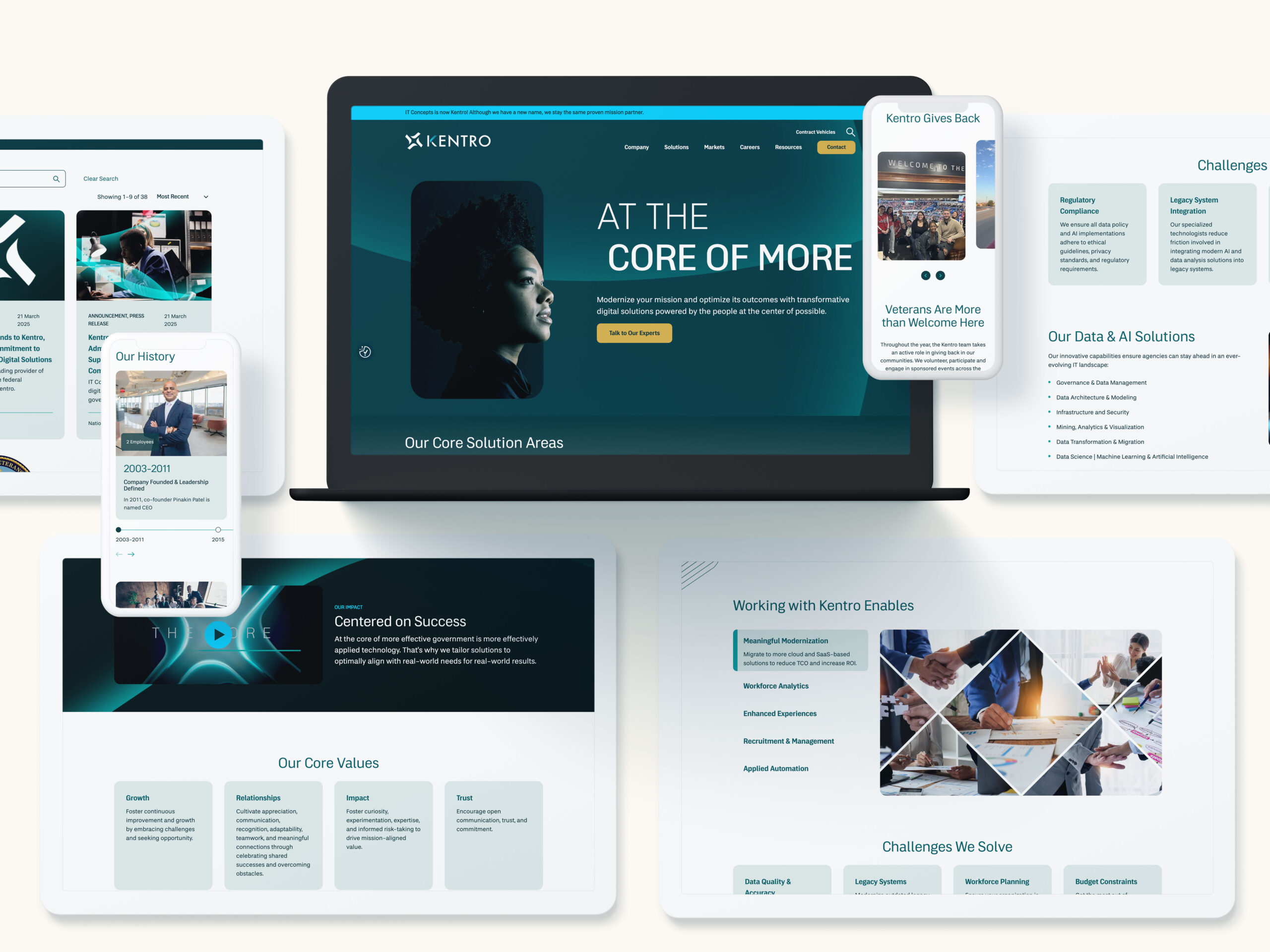
4. Thought Leadership That Builds Trust
Thought leadership is a powerful way to bridge the gap between a refreshed identity and long-term credibility. In the B2G space, where contract cycles are long, risk tolerance is low, and relationships drive revenue, becoming a trusted voice can mean the difference between being considered or completely overlooked.
But authentic thought leadership isn’t about self-promotion. It’s about publishing content that adds value to ongoing government conversations—showing that you understand their challenges and have real insights to offer. A rebrand can serve as a perfect catalyst to reposition your organization as a forward-thinking leader.
- Lead with value, not self-congratulation. Offer practical insights, guidance, and takeaways relevant to agency challenges.
- Use op-eds, white papers, and webinars to establish credibility and invite dialogue with decision-makers.
- Make your rebrand the starting point for deeper, more strategic conversations, not the end goal.
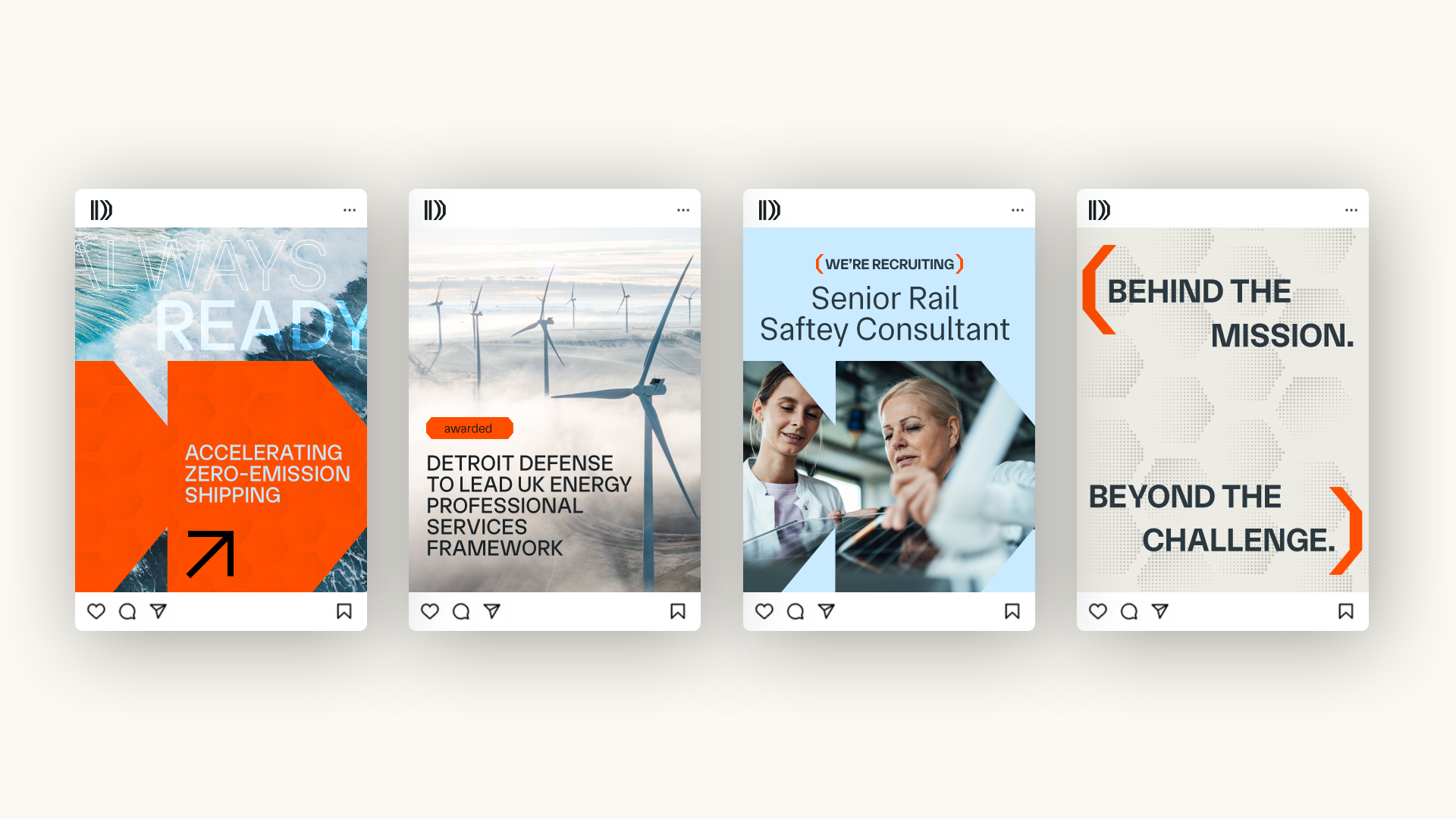
5. Media Strategy: Quality Over Quantity
In government communications, it’s not about being everywhere—it’s about being in the right places. The ecosystem of reporters, editors, and publications that shape public sector narratives is small, well-informed, and highly influential. If you want your rebrand to land, it needs to show up where the right people are paying attention.
A high-impact media strategy doesn’t chase flashy headlines—it targets relevant, trusted outlets with tailored messaging that matches the publication’s tone, audience, and purpose. That’s how you move the needle with government buyers and influencers.
- Focus on specialized outlets like Federal News Network, Defense News, GCN, and GovExec, where key agency stakeholders actually read and engage. If your rebrand is elevating DoD, S&L, or NatSec, ensure top outlets for those market decision makers are prioritized.
- Adopt a tiered media strategy to match your messaging and storylines to the needs of each publication and its readers.
- Cultivate media relationships proactively. Familiarity and access go a long way in the B2G press world—invest time before you need the coverage.
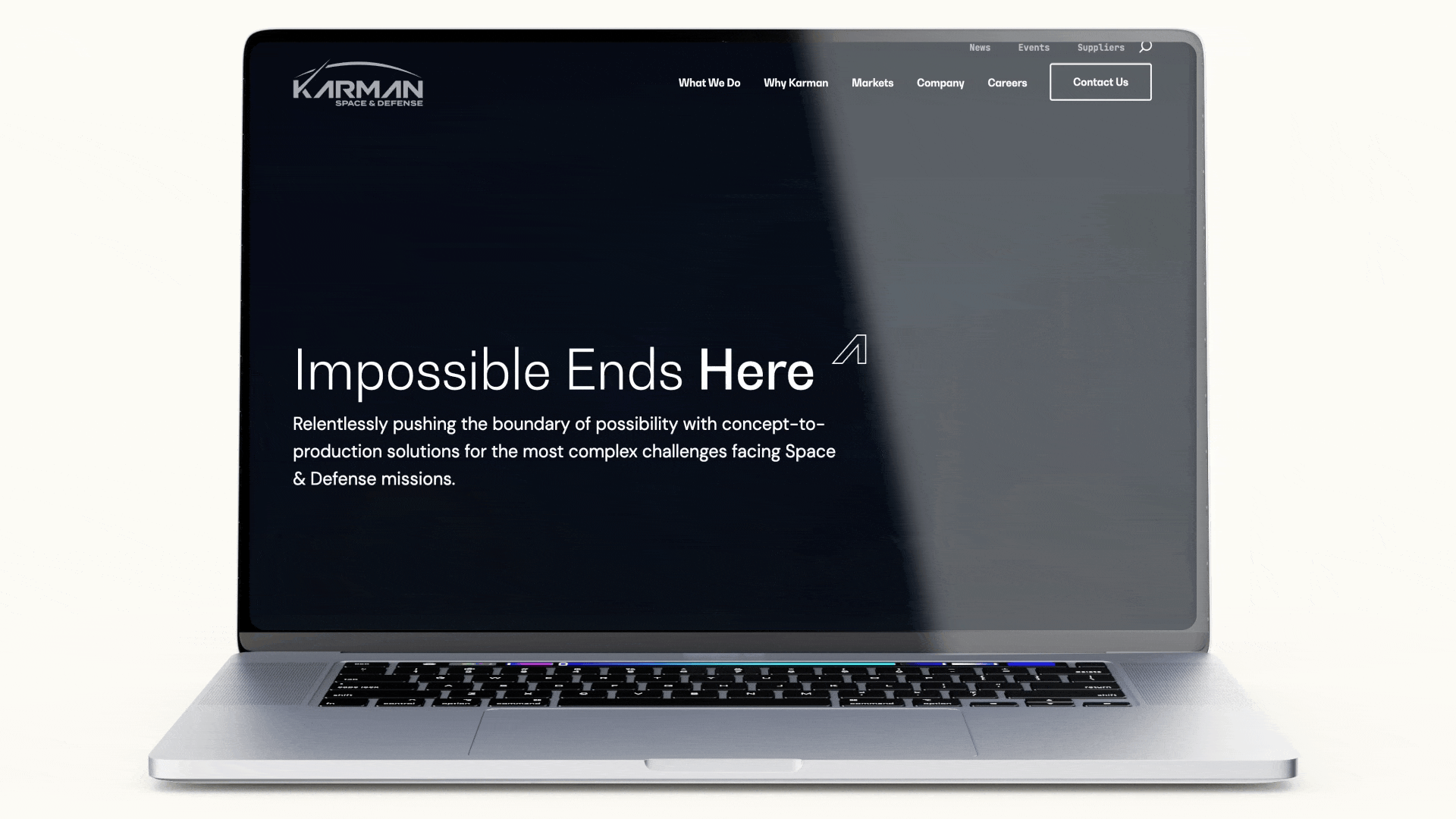
6. Timing is Everything
Even the best B2G brand story can fall flat if it’s delivered at the wrong time. In public sector markets, timing isn’t just about media cycles—it’s about fiscal calendars, procurement schedules, regulatory cycles, and the rhythm of government business.
Rolling out a rebrand at the wrong moment can mean losing attention—or worse, looking tone-deaf. Understanding the ebbs and flows of your agency customers’ world is essential to getting your message heard.
- Align your rebrand with government planning cycles, such as Q1 budget allocations, spring RFPs, or strategic planning windows.
- Avoid periods of political volatility or legislative distraction that may drown out your news.
- Think seasonally. Fall may be right for modernization campaigns, while spring might better serve fiscal-year planning or workforce engagement efforts.
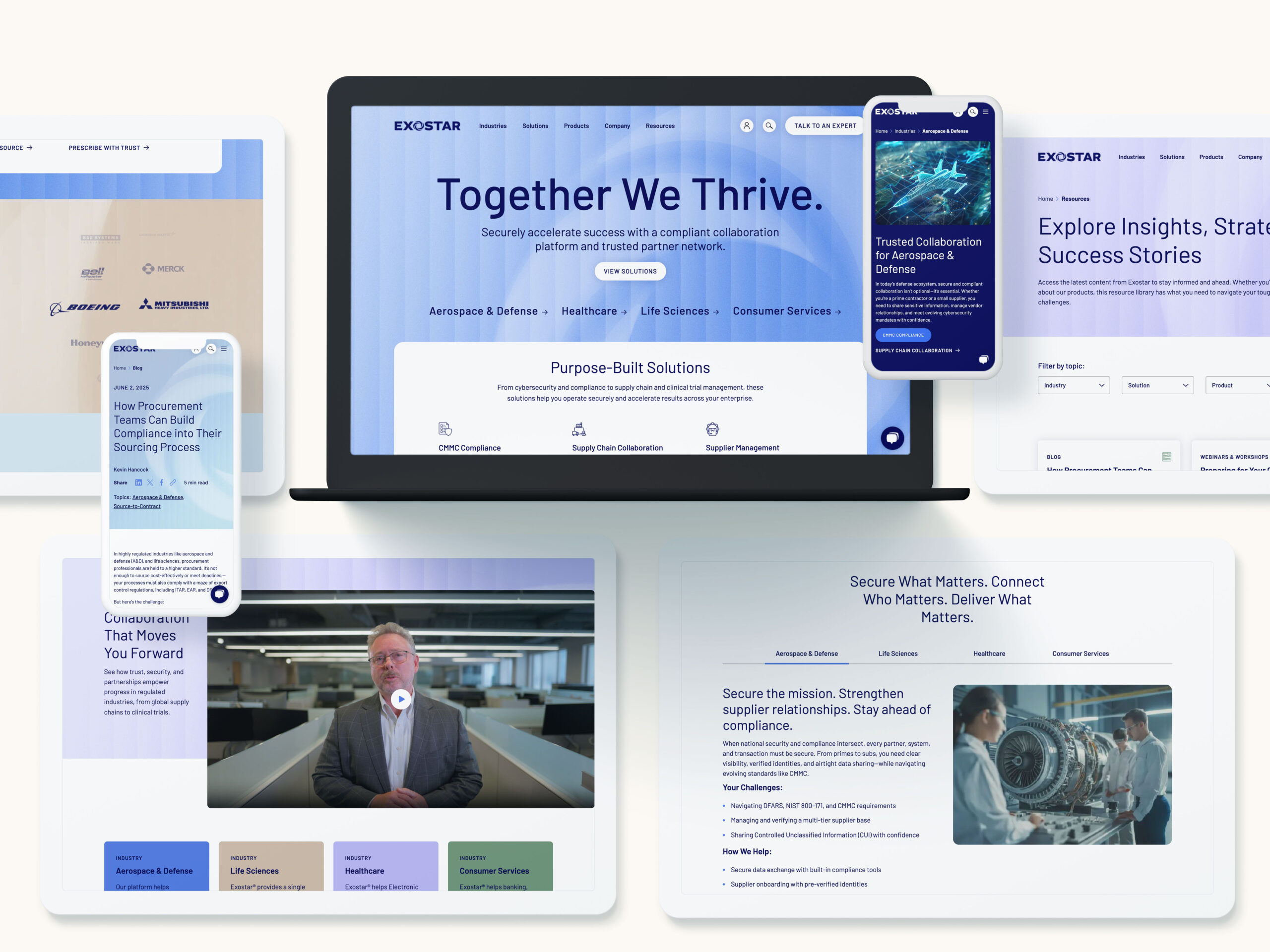
7. Metrics That Matter in Government Markets
Forget vanity metrics. When rebranding in B2G, measure what matters to stakeholders and decision-makers.
- Track internal adoption and ambassador activation as key success metrics.
- Monitor earned media impact, stakeholder sentiment, and procurement engagement.
- A successful rebrand builds trust, boosts visibility, and opens new doors with credibility.
Final Thought: Make It Count
Rebranding in the public sector space isn’t about being flashy—it’s about being credible. It’s about clarity, trust, and telling a story that resonates from the Pentagon to City Hall. Public relations helps you bring that story to life—strategically, confidently, and authentically.
At Bluetext, we understand how B2G brands grow because we’ve helped build them from the ground up. If you’re thinking about a rebrand or already planning one, let’s talk about how to make it land where it counts.
In the high-stakes world of defense contracting, great capabilities often go unnoticed—not because they underperform, but because they aren’t on the right radar. Winning business inside the Department of Defense (DoD) doesn’t start with a contract vehicle or an RFP. It starts with a strategy. To get your tech, tools, or team in front of DoD decision-makers, you must first understand the unique buyer journey within the Pentagon and the creative marketing tactics that cut through complexity, compliance, and competition.
Here’s how to win the mission—before it’s even assigned.
Understanding the DoD Buyer Journey
Marketing to the Department of Defense means navigating a buyer journey unlike any in the commercial world. Instead of a centralized decision-maker, you’re targeting an ecosystem of stakeholders, including:
- Program managers seeking mission alignment
- Contracting officers focused on compliance and pricing
- Technical evaluators assessing performance and security
- End users who may shape requirements
- Innovation arms like DIU, AFWERX, and NavalX
This journey can be broken down into three high-level phases:
1. Awareness: Identifying the Mission Need
The DoD doesn’t buy software or satellites for the sake of modernization—they buy capabilities that close mission gaps. Your first marketing challenge is making potential customers aware that your solution aligns with their pain points. That starts with translating your commercial value proposition into national security outcomes.
2. Consideration: Evaluating Potential Capabilities
Once a mission need is validated, decision-makers assess technical fit, risk, and readiness. This is where white papers, demos, and small pilot contracts (like SBIRs) can elevate your profile—if you’re already on their radar.
3. Procurement: Navigating the Acquisition Pathway
Even when you’re the right fit, getting funded depends on being in the right place at the right time with the right contract vehicle. Marketing must support your business development team’s efforts to align with OTAs, BAAs, or IDIQs early.
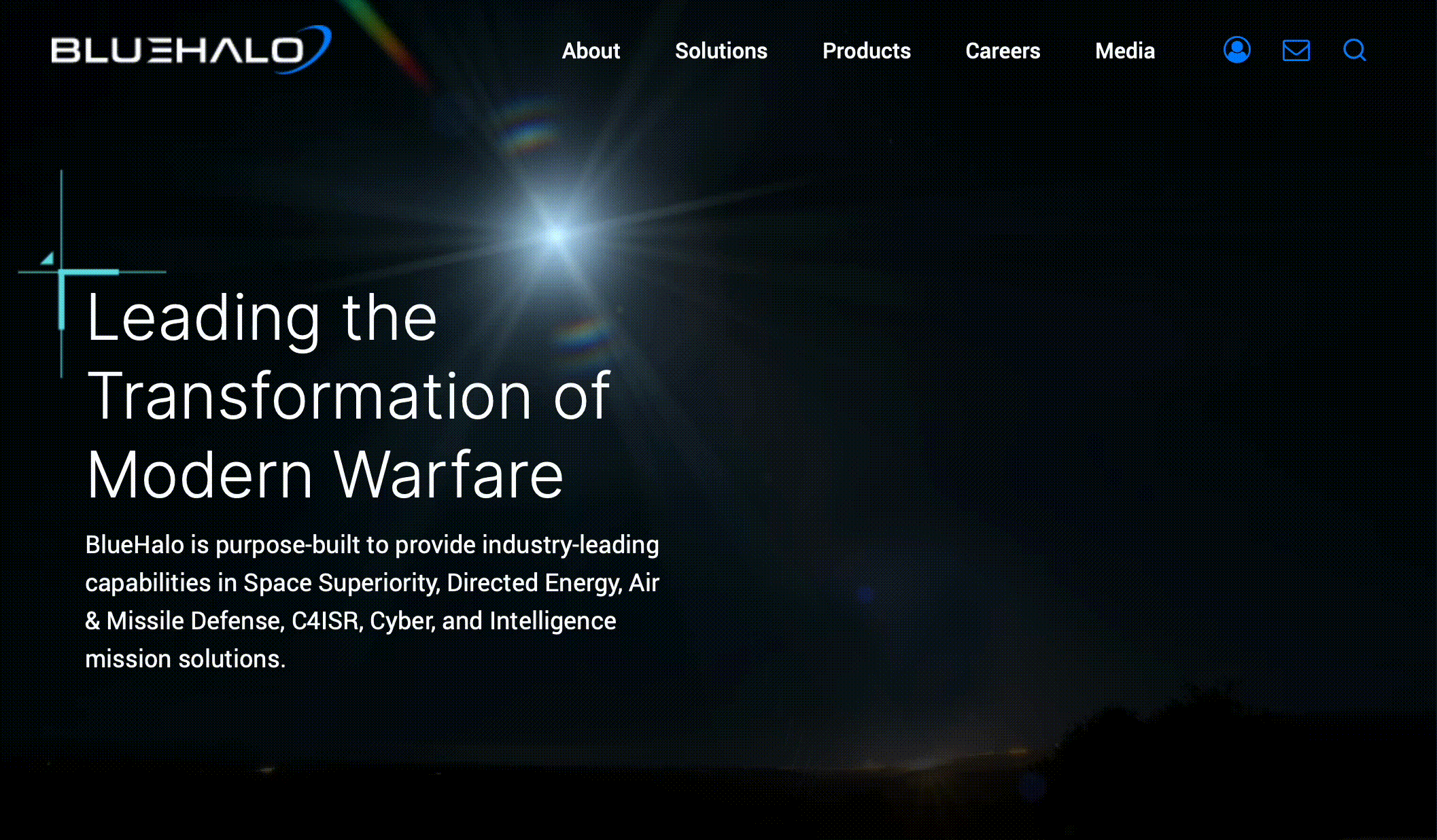
Why Marketing to the DoD Is Different
The Department of Defense is not just another vertical—it’s a culture with a complex procurement architecture, specialized language, and risk-averse mindsets. Common marketing missteps include:
- Using the wrong language. Civilian tech jargon often doesn’t resonate. Using terms like “zero trust,” “kill chain,” or “interoperability” (where appropriate) can make a difference.
- Leading with features, not mission relevance. DoD buyers need to see how your solution enhances warfighter readiness, improves situational awareness, or reduces lifecycle costs.
- Assuming access. Traditional digital channels don’t always reach .mil audiences due to firewall restrictions.
- Ignoring the influence network. Many decisions are made before a formal solicitation appears. If you’re not part of the early-stage conversation, you’re likely too late.
Creative Strategies to Break Through Bureaucracy
Marketing to the Pentagon requires more than brochures and trade show booths. Here are six tactics to earn attention where it counts:
1. Lead with Mission Impact Messaging
Replace “faster, better, cheaper” with language that speaks to capability gaps and operational outcomes. Emphasize how your solution supports Joint All-Domain Command and Control (JADC2), resilience, cybersecurity, or domain superiority.
2. Create Dual-Purpose Campaigns
Develop content that serves both education and enablement—think explainer videos that work on LinkedIn and in BD meetings, or solution briefs that double as handouts at AUSA or WEST.
3. Activate Trusted Voices
Nothing resonates like a peer or former insider. Partner with former flag officers, cleared consultants, or respected integrators who can validate your offering through blogs, speaking engagements, or earned media.
4. Deploy Account-Based Marketing (ABM)
DoD outreach isn’t one-size-fits-all. Create hyper-targeted campaigns focused on specific branches, program offices, or commands. Combine this with IP targeting or LinkedIn filters to reach the right desks.
5. Modernize the Demo Experience
Move beyond PowerPoints. Use immersive media—AR, VR, or 3D simulations—to bring your product to life. Even a digital twin or 3D walkthrough can help abstract capabilities click.
6. Map to Acquisition On-Ramps
Time your marketing to coincide with pre-RFI periods, BAA cycles, or SBIR solicitations. Educating stakeholders before the paperwork starts gives you an edge over competitors who wait for the RFP.
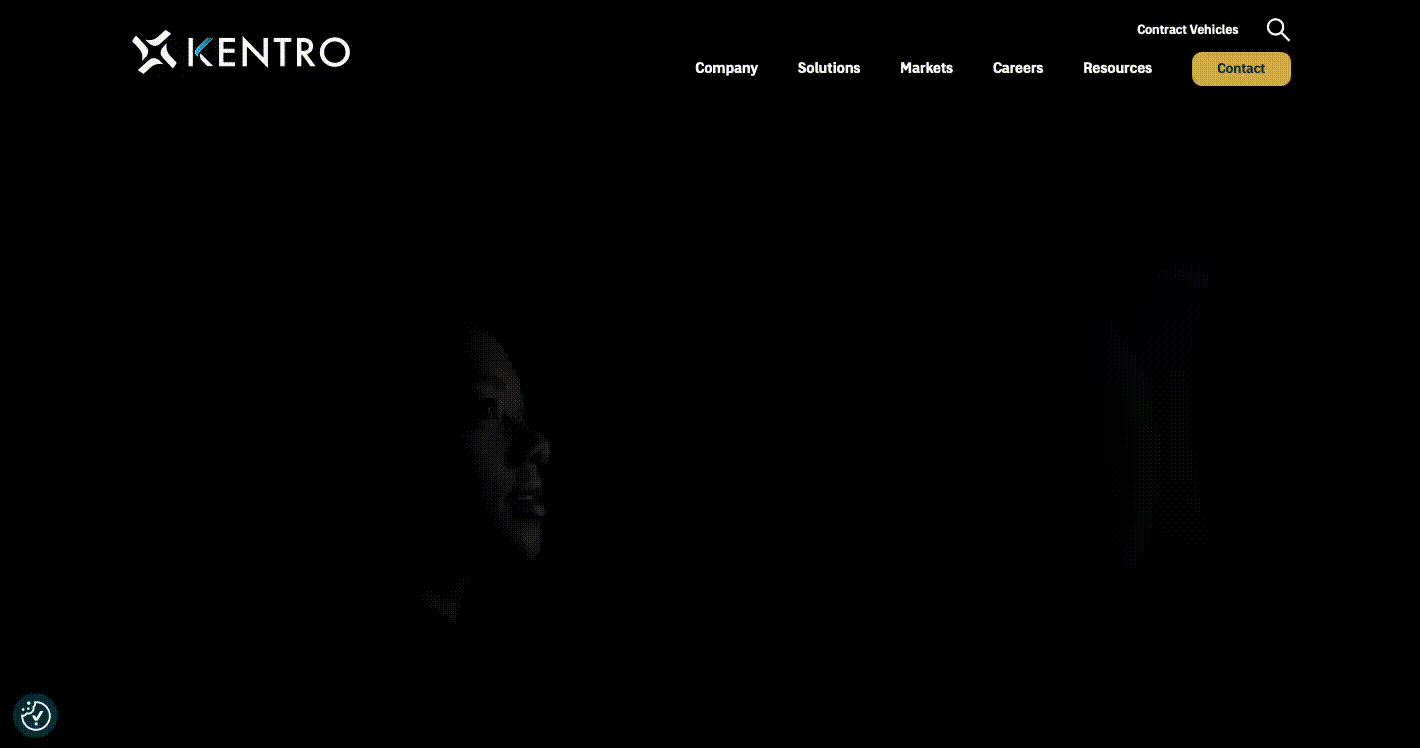
Where Bluetext Comes In
At Bluetext, we’ve helped some of the fastest-growing names in national security—like ManTech, BlueHalo, and Axient—cut through the noise with branding, campaigns, and digital experiences that get noticed and get funded. Following our strategic marketing efforts, these companies have seen increased visibility, improved stakeholder engagement, and in several cases, successful acquisition outcomes.
We’ve also partnered closely with Arlington Capital Partners and Sagewind Capital, helping portfolio companies position themselves effectively within the government ecosystem—from visuals and messaging to launch strategy and campaign execution.
We understand what it takes to make an impression inside the wire—and we deliver it.
Position Your Brand to Win the Next Mission
The most successful defense marketers know it’s not about selling—it’s about aligning. By mapping your message to mission needs, understanding the nuances of the federal buyer journey, and deploying creative strategies that cut through red tape, your brand can become not just known—but trusted.
Looking to elevate your marketing strategy for the defense space? Let’s talk about how Bluetext can help you win inside the DoD.
When people talk about “brand,” they often think first of logos, colors, or snappy taglines. But a brand is much bigger than any single touchpoint—it’s the sum of perceptions, experiences, and promises you deliver over time.
Still, there’s no getting around it: your website is often where that brand has to prove itself first.
Your website may not be your brand in its entirety. But for many customers, it’s the first meaningful encounter they’ll have with it. And first impressions are hard to shake.
How do you ensure your bold brand strategy doesn’t fall apart at the moment it matters most? Let’s explore how to bridge the gap between big-picture strategy and polished digital execution.
Your Brand Lives Beyond Your Website
A strong brand isn’t just a pretty website. It’s your company’s purpose, promise, and personality brought to life in ways your audience understands and trusts.
Your brand shows up in:
- How you serve customers.
- What you stand for.
- The stories you tell.
- The tone you use everywhere, from social media to sales calls.
A website alone can’t be your entire brand. It can’t deliver your customer service. It can’t stand in for your product quality. And it certainly can’t fix a muddled positioning strategy behind the scenes.
That said—it’s often the first place people expect to see all of that come together. If your site doesn’t reflect your brand clearly and convincingly, you’re starting every conversation at a disadvantage.
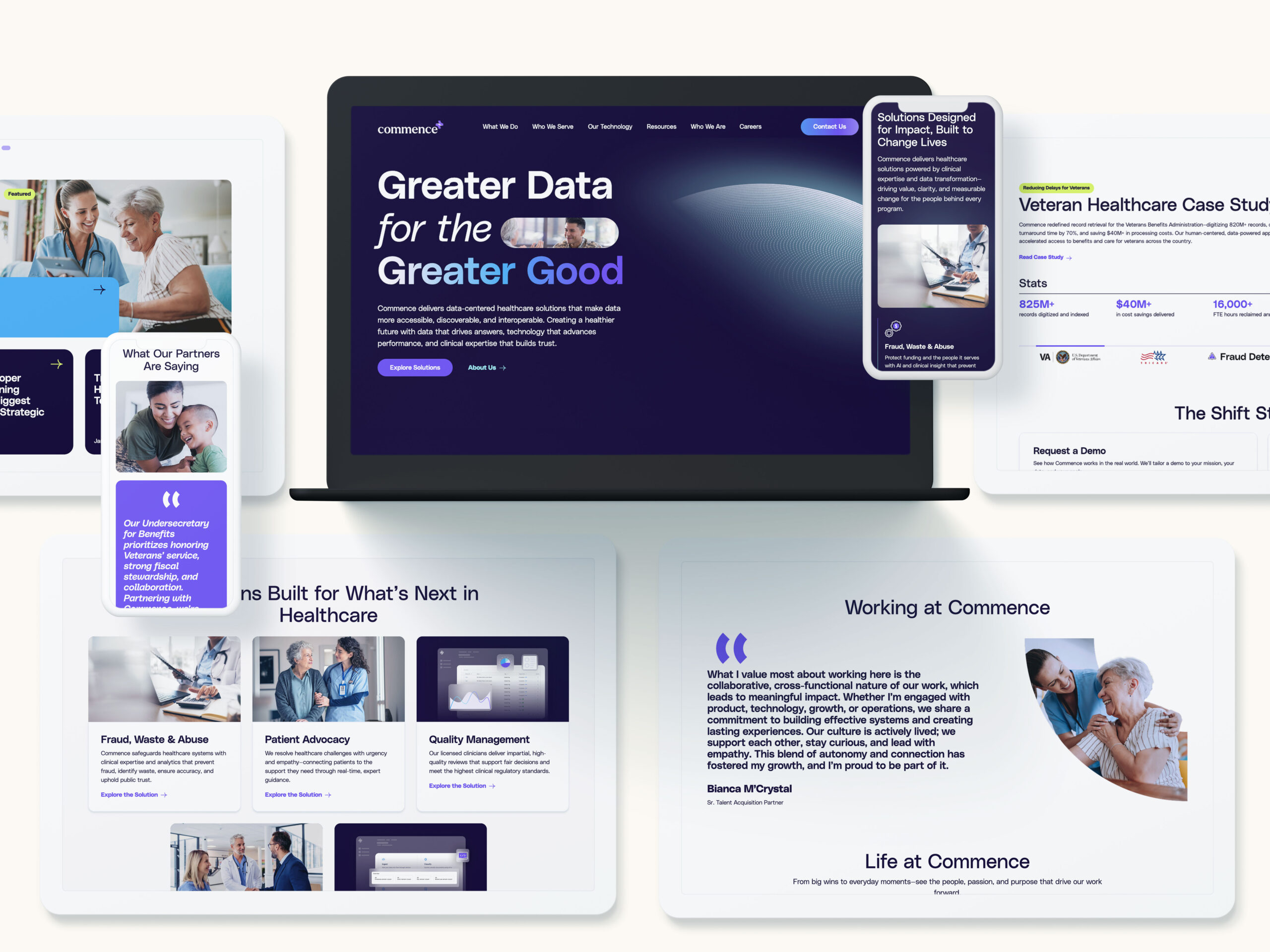
Why Your Website Still Matters More Than Ever
We live in a world of relentless digital first impressions. Studies suggest people form judgments about a website in as little as 50 milliseconds.
Think about that: before they’ve read your mission statement or learned about your product, they’re forming opinions about your brand.
- Trustworthiness
- Credibility
- Relevance
- Professionalism
Your website has to deliver all of that at a glance.
Even the strongest brand strategy can be undermined by poor execution online. It doesn’t matter how great your positioning sounds in the boardroom if your website feels sloppy, confusing, or out of sync with your brand voice.

Common Gaps Between Brand Strategy and Digital Execution
This disconnect is more common than you might think. A few telltale signs:
- Tone mismatch: Brand guidelines say “friendly and approachable,” but the copy reads like legal boilerplate.
- Generic design: A safe, cookie-cutter template that could belong to any company in the industry.
- Confusing navigation: Strategic pillars buried behind obscure menu labels.
- Unclear messaging: Buzzwords instead of real value propositions.
These gaps happen because it’s easy to treat brand strategy and website design as separate efforts. But they’re not. Your site is the place where your brand proves itself.
Bridging the Gap: Practical Tips
How can you make sure your bold brand strategy doesn’t get lost in translation?
Here are some proven ways to align strategy and execution:
- Translate personality into UX: If you want to be seen as premium, prioritize elegant simplicity. If your brand is playful, let that inform micro-interactions and visuals.
- Align copywriting with brand voice: Your web copy should sound like you, not just like “professional corporate website #374.”
- Use visual systems that scale: Develop a design system that extends from your site to social, email, and beyond. Consistency breeds trust.
- Prioritize clarity over complexity: No matter how strategic your messaging is, if users can’t find what they need quickly, they’ll bounce.
- Test with real users: Don’t just ask your internal team. Get feedback from people who don’t know your brand inside out.
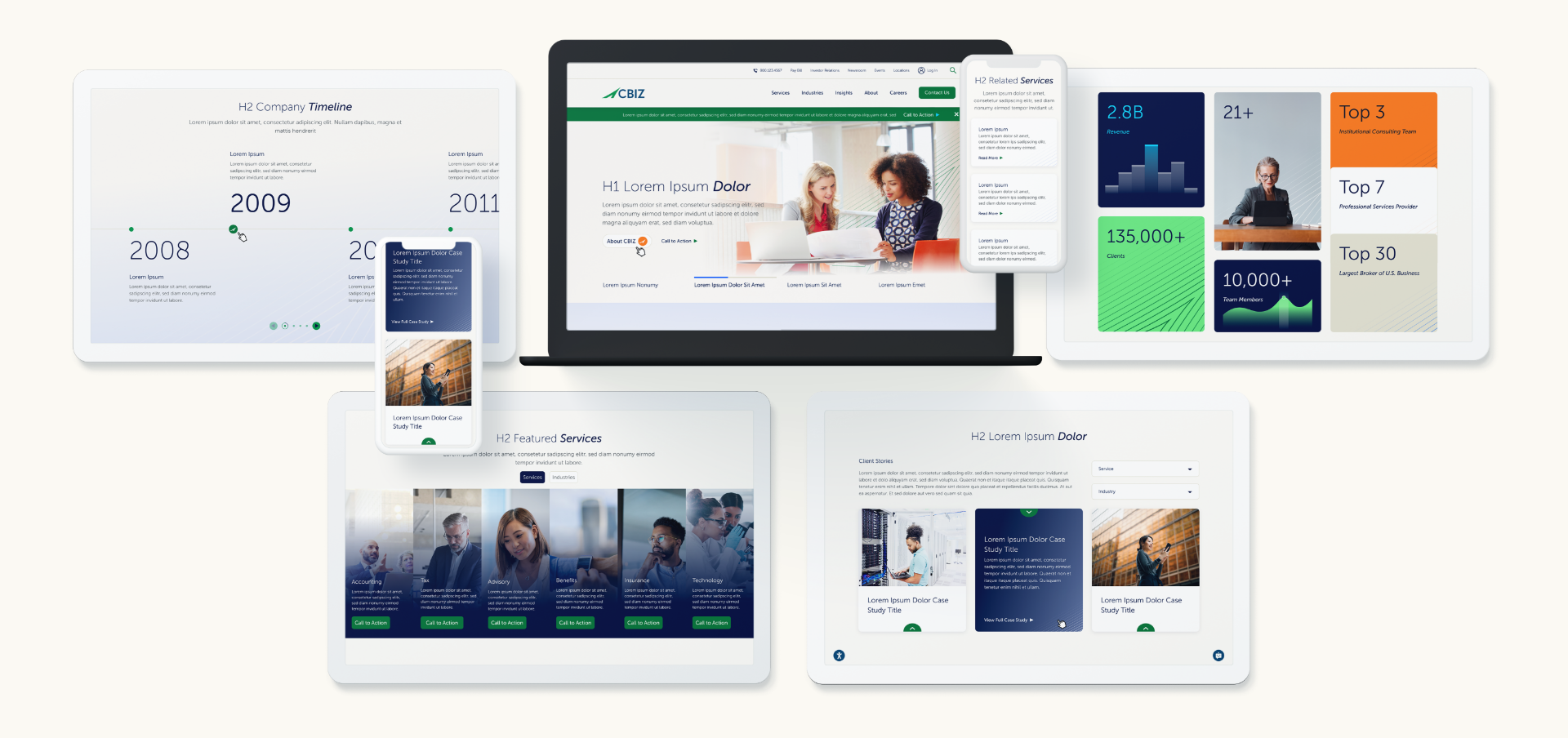
Avoiding the Trap of “Pretty But Hollow” Sites
Many companies get fixated on making their site look “modern” or “impressive” without asking whether it’s actually on-brand.
A gorgeous site that doesn’t communicate your differentiators or support your customer journey is like a beautiful store with no helpful staff inside.
Your website shouldn’t just be decoration. It should:
- Convey your value clearly.
- Reinforce your unique position in the market.
- Help visitors take the next step, whether that’s contacting sales or exploring resources.
The Role of Collaboration in Getting It Right
Bridging this gap isn’t just about design or copy—it’s about people working together.
Often, brand strategy lives with one team while the website project sits with another. That creates silos that lead to inconsistency.
Best practices to avoid this:
- Joint workshops: Get branding, marketing, and digital teams in the same room early.
- Shared guidelines: Build brand voice and visual guidelines that include digital specifics.
- Feedback loops: Review work at multiple stages to ensure alignment.
When these teams collaborate from day one, you don’t just get a better website—you get a better brand experience.
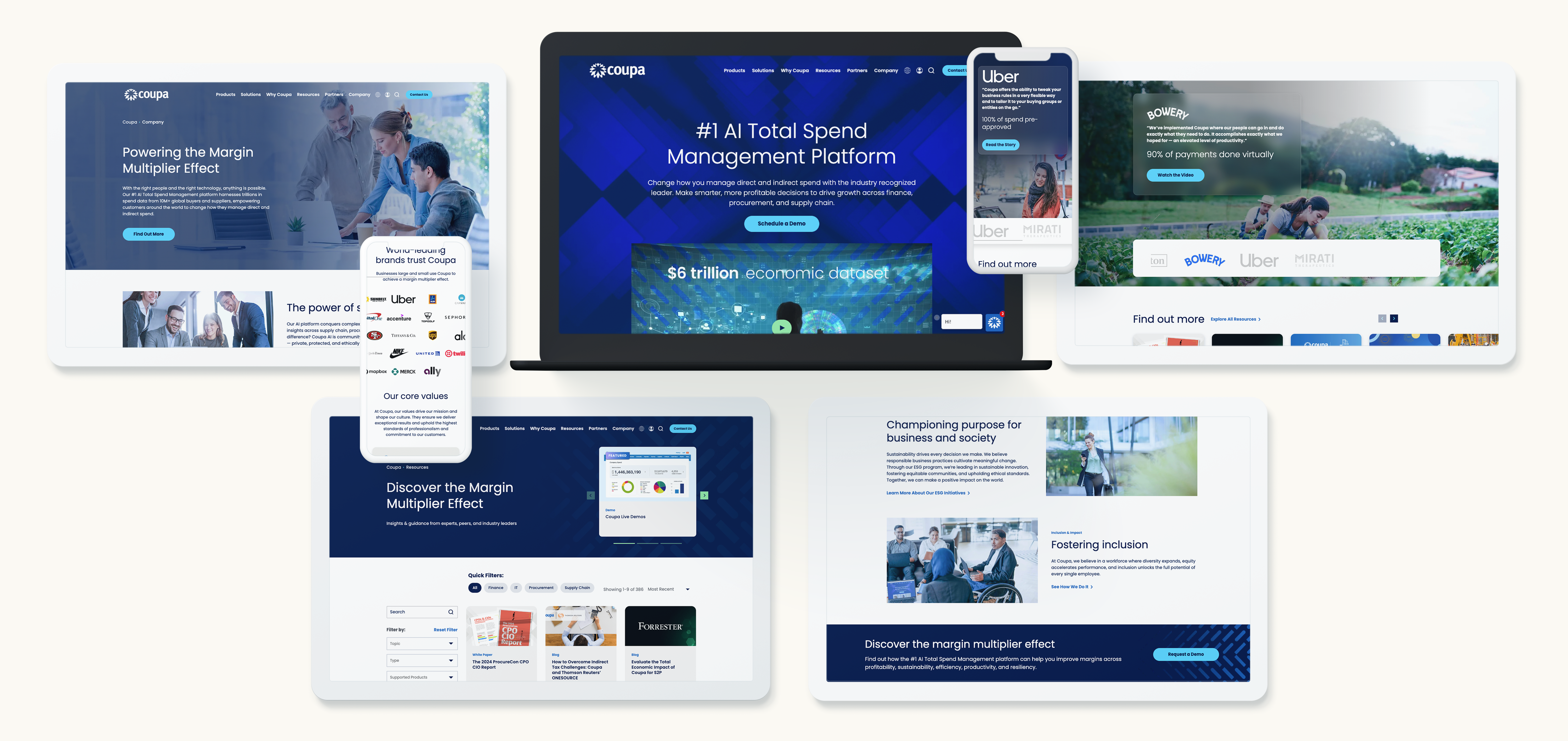
Making the Right First Impression
Your website isn’t your brand in full. But it is the moment your brand often has to earn trust.
If your brand strategy is the promise, your website is where you start delivering on it.
At Bluetext, we help brands close that gap—from defining a bold, authentic strategy to executing it seamlessly online.
If you’re ready to make sure your website reflects your brand at its best, get in touch with us.
B2B technology providers undertake rebranding projects for various reasons. And over the course of the hundreds of rebrands Bluetext has executed, we’ve heard them all: M&A activity, market and competitive shifts, organizations outgrowing their current brand, a desire for updated visuals, you name it.
Often, these rebrands include refreshed creative elements – a new logo, name, and website – to help amplify the business’s marketing efforts, drive market growth, and enhance brand positioning. When prioritizing the visual components of a rebrand, the PR and communications portion can be overlooked.
However, maximizing the near- and long-term benefits of a rebrand requires that PR and communications strategy be incorporated from day one. When supporting clients through a B2B rebrand, Bluetext ensures that PR and communications are involved from the start of the process. Because there is a story to be told to all your stakeholder audiences —a story that extends beyond a new logo, CVI, and website.
Tactical components of a robust PR and communications rollout require a steady cadence of activity, including:
- An anchor press release and announcement strategy to create momentum
- Social media strategy and execution
- Thought leadership (SME bylines + executive visibility)
- Event speaking and award program execution
- Customer testimonials
These elements comprise the three pillars of any successful PR and communications B2B rebrand strategy: amplification, acceleration, and assurance.
Amplification
Rebrands offer businesses unique opportunities to highlight their evolution. They serve as a springboard to amplify companies’ core strengths in new, compelling ways to current and prospective clients.
When ideating on how to make a splash and drive attention to the rebrand, companies should highlight how their solutions are pushing the industry forward and solving tangible client problems.
This pillar should include three tactics:
- Social media posts that tease the enhanced capabilities of the rebranded business in the lead-up to the announcement, driving interest and intrigue. Following the launch, social channels should be used to help sustain momentum.
- An anchor press release that announces the new brand’s creation, how the new company addresses critical challenges in the market, and why the new entity will be better positioned to service clients and provide innovative solutions for new customers.
- Newsjacking, i.e., rapid-response media relations, provides opportunities for company spokespeople to speak with journalists on key industry topics and articulate how the company is addressing and thinking about these market trends.
Acceleration
Amplifying the rebrand announcement is critical to increasing awareness of the new company and its offerings. Once you have the audience’s attention, the next step is communicating how this rebrand will accelerate growth and drive value for the company and its clients.
Rebrands should reframe the company’s position in the market while demonstrating its momentum and ambition. In other words, what is the business looking to achieve? How does it plan to grow? By highlighting early milestones and client successes, the company can map out its desired trajectory for the months and years ahead.
Answering these questions can be accomplished through:
- A Subject Matter Expert (SME) Thought Leadership program to highlight the organization’s areas of expertise and detail how the new brand is pushing the industry forward and addressing market challenges in ways not previously possible while clarifying the mission of the new brand.
- Speaking at conferences and pursuing industry awards. These are useful avenues to reinforce the company’s new market position, validate the business’ latest offerings and also serve as respected forms of recognition within the industry.
- Highlighting customer successes that reflect the values of the new brand while offering tangible examples of early successes.
Assurance
With any change comes a degree of uncertainty. However, that doesn’t mean that business operations will be altered. The last pillar to any successful PR and communications rollout is assuring all stakeholders – clients, employees, and investors – that day-to-day operations will not change, but instead grow and thrive.
Articulating to these stakeholders how the new company will be a positive disruptor without causing negative disruption is crucial.
For employees, the rebrand should energize workers and reinforce the organization’s values. Empower them to provide details of the rebrand through a social advocacy campaign that includes brand-aligned content, personal stories, and messaging examples that they can use as guidance for their posts.
For investors, it’s essential to demonstrate how the rebrand will strengthen the company’s capabilities to deliver value and adapt to a changing market landscape.
When undergoing a rebrand, organizations that effectively execute these three foundational PR pillars will educate key audiences and generate excitement about the new company. These PR strategies and tactics should fold into a holistic brand evolution approach. To learn more about how Bluetext executes successful PR and communications B2B rebrand rollouts, follow us on LinkedIn or contact us today.
In a marketing world driven by personalization, relevance, and precision, a one-size-fits-all approach no longer cuts it. As markets mature and buyers demand deeper expertise, more global CMOs are turning to a proven strategy to break through the noise: verticalization.
Rather than positioning their products or services in broad horizontal terms (e.g., “project management software” or “cloud security”), top SaaS and services brands are embracing industry-specific go-to-market strategies that speak directly to the pain points, regulations, and nuances of distinct verticals like healthcare, government, financial services, or manufacturing.
And the results? Higher win rates, stronger brand affinity, and shorter sales cycles.
What Is Verticalization—and Why Now?
Verticalization means tailoring your entire marketing and sales motion—messaging, content, campaigns, and even product features—to the needs of a specific industry.
It’s more than just inserting an industry name into a landing page. It’s about showing buyers that you understand their world—their compliance requirements, their legacy systems, their KPIs—and that your solution was built with their unique context in mind.
With B2B decision-makers increasingly tuning out generic messaging, brands that go deep rather than wide are standing out.
Why CMOs Are Leaning In
Global marketing leaders are investing in verticalization because it delivers measurable, strategic advantages:
1. Relevance that drives resonance
Generic messaging may sound safe, but it rarely inspires action. Tailored industry messaging helps buyers see themselves in your story—and moves them further down the funnel.
2. Faster sales cycles
Industry-aligned sales enablement tools (e.g., vertical case studies, ROI calculators) help reps build trust faster and reduce time spent educating prospects on fit.
3. Better content performance
Industry-specific thought leadership and gated content drive higher engagement and conversion rates, especially in ABM or outbound campaigns.
4. Stronger differentiation
In crowded categories, vertical fluency sets you apart. Buyers don’t just want software—they want solutions built for them.

What Verticalized Marketing Looks Like in Practice
To make verticalization work, brands need to operationalize it across the marketing ecosystem:
1. Dedicated industry teams or pods
Many global CMOs are standing up “vertical marketing managers” or small pods that own campaign development, content calendars, and sales enablement for a given sector.
2. Industry-tailored buyer journeys
From awareness to conversion, each touchpoint should reflect the language, needs, and challenges of that specific industry—whether it’s a white paper for healthcare CIOs or a nurture flow for state-level procurement teams.
3. Customized web experiences
Landing pages, homepage segments, or entire microsites built for individual industries can dramatically improve engagement and conversion.
4. Sales and marketing alignment
Ensure that industry-specific marketing efforts are tightly integrated with sales motions. The messaging used in campaigns should map directly to the conversations happening in the field.
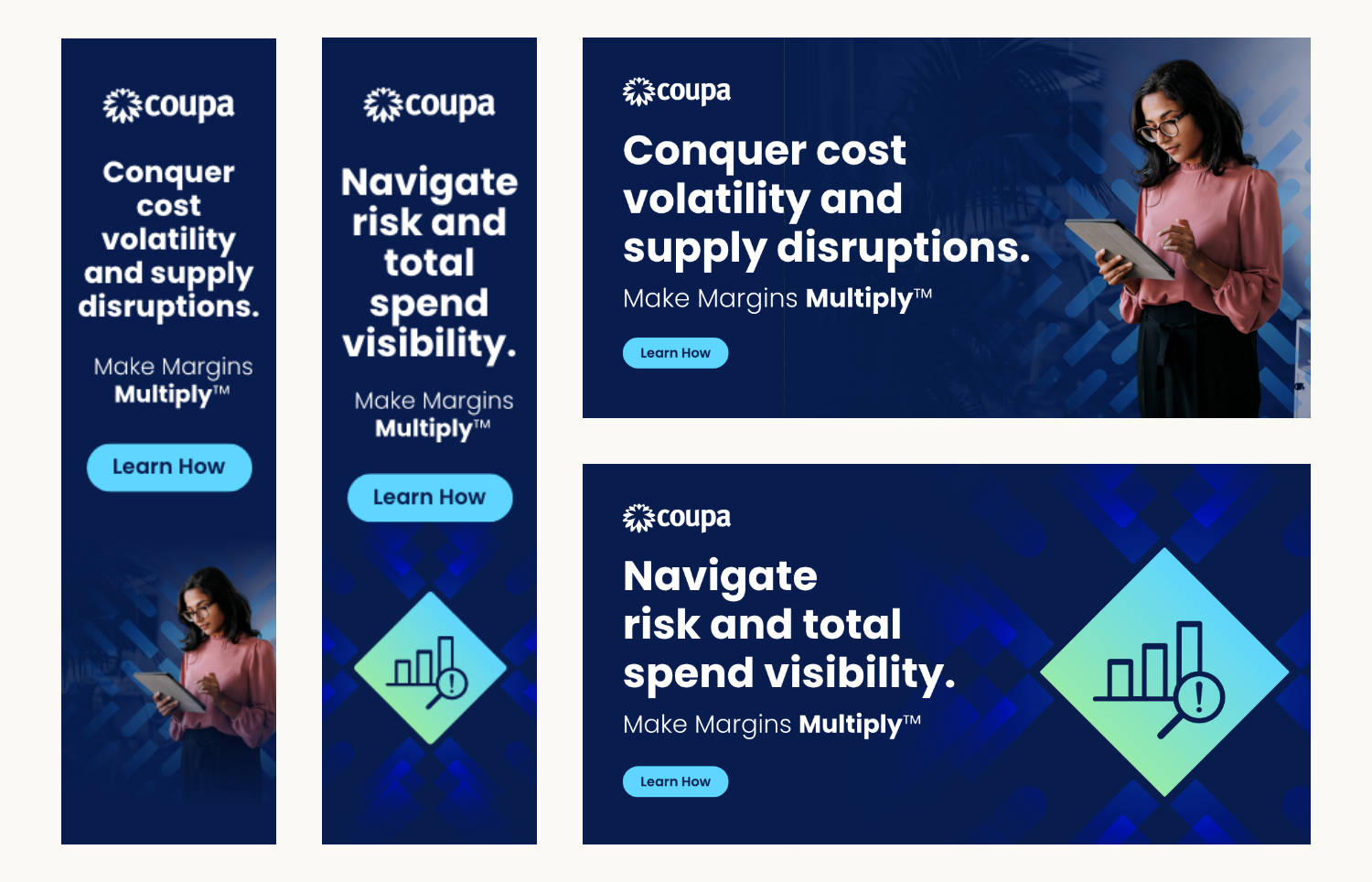
Deep Messaging, Not Just Different
Verticalization isn’t a find-and-replace exercise. Buyers can smell inauthenticity. To be effective, your marketing must show true domain expertise.
That means:
- Speaking to regulatory realities (e.g., HIPAA, FedRAMP, PCI-DSS)
- Referencing industry-specific workflows or pain points
- Using metrics that matter to the sector—whether it’s uptime, throughput, cost per bed, or citizen satisfaction
Collaborating with subject matter experts, leveraging customer testimonials, and co-creating with vertical influencers can help you avoid surface-level messaging.
How to Scale Without Losing Focus
A common concern with verticalization is that it can become complex and resource-intensive. The key is building systems that allow for scale and specificity:
- Create modular campaign assets (e.g., hero videos, pitch decks, email sequences) that can be easily adapted per vertical.
- Develop a flexible brand framework that preserves consistency while enabling regional or industry customization.
- Use a centralized DAM and CMS to manage, update, and distribute vertical-specific content across global teams.
- Define a rollout roadmap—you don’t need to verticalize for every industry at once. Start with your top-performing or highest-potential sectors.

Why It Works
At its core, verticalized marketing works because it meets buyers where they are. It builds credibility, confidence, and conversion power—three things every marketing leader is after.
And in competitive categories where every brand sounds the same, speaking your buyer’s language is no longer a nice-to-have—it’s a strategic imperative.
Want to Build an Industry-Specific Growth Strategy?
Bluetext helps brands reframe their messaging, campaigns, and go-to-market strategies around the industries that matter most. Whether you’re launching into new sectors or scaling vertical programs globally, we build frameworks that drive results. Contact us to start verticalizing your marketing—and winning where it counts.
The generative AI revolution is well underway—and marketers are on the front lines. Since the introduction of GPT-powered tools like ChatGPT, marketers have rapidly integrated AI into everything from content creation and ideation to campaign execution and analytics.
But as adoption accelerates, a bigger question emerges: Are we using it well?
The opportunity is enormous—but so are the risks. Here’s what’s working today, where to tread carefully, and how to build a future-ready marketing stack in the age of GPT.
What GPT Is Changing About Marketing
At its core, GPT technology (short for Generative Pre-trained Transformer) allows marketers to generate human-like content at scale. This has unlocked new possibilities in:
- Content velocity – Faster creation of blogs, product descriptions, emails, and ad copy
- Personalization – Tailored messaging across segments and personas
- Ideation and brainstorming – Campaign themes, subject lines, even visual prompts
- Customer service and chat – AI-powered agents handling FAQs and low-complexity requests
- SEO and keyword strategy – Smart suggestions based on semantic patterns
It’s no longer a question of whether to use GPT—it’s a question of how to use it responsibly and strategically.
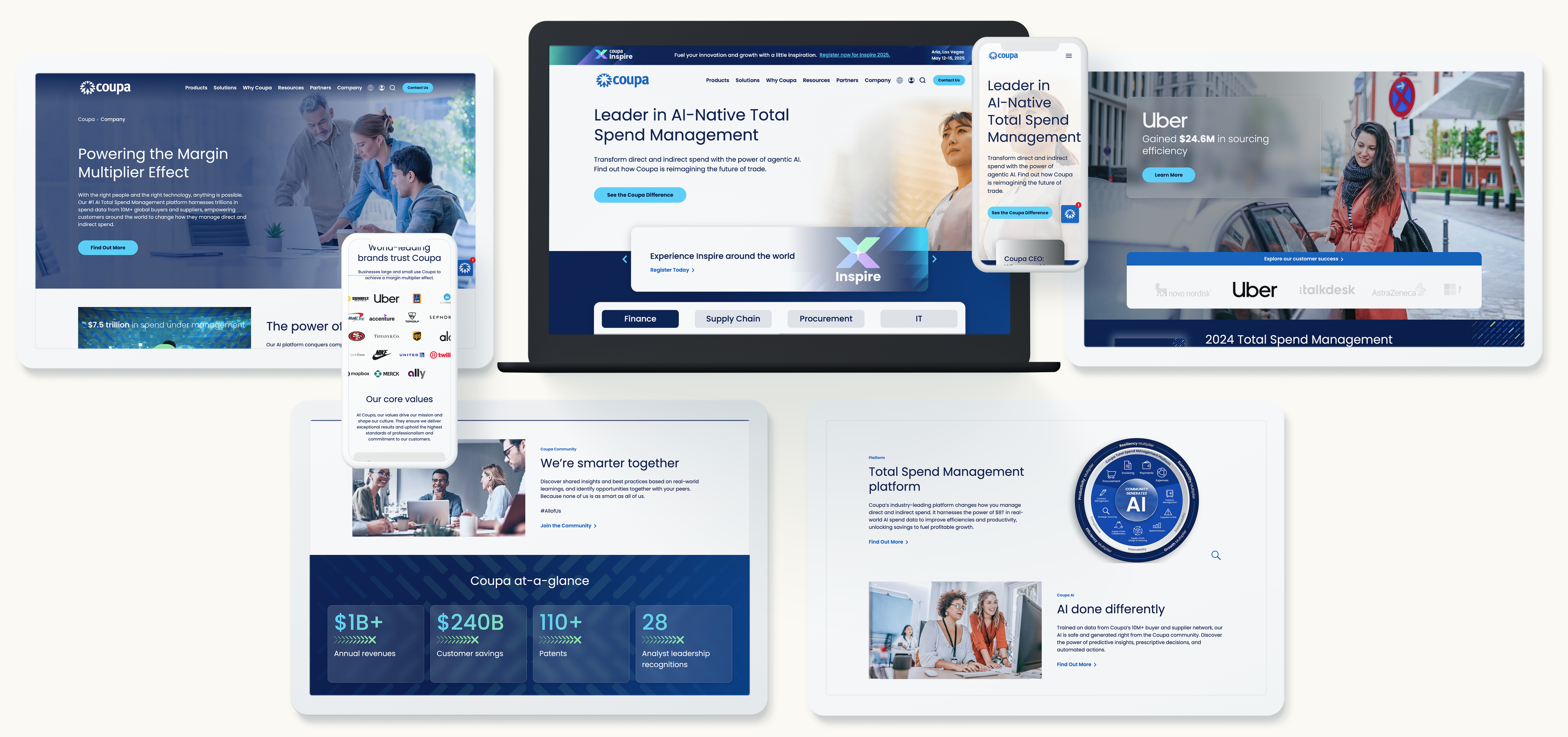
What’s Working Right Now
For many marketers, GPT is becoming a reliable sidekick. Use cases that are delivering real value today include:
- First-draft generation: Letting AI handle the heavy lift of a blank page—for blogs, emails, or social posts—so teams can focus on refinement and brand alignment.
- Summarization and transcription: Turning long-form webinars, internal briefings, or interviews into summaries, takeaways, and content assets.
- Creative brainstorming: Rapidly generating headline variations, campaign taglines, or concept ideas during early planning stages.
- Repetitive content tasks: Writing hundreds of meta descriptions or programmatically varying CTAs for different segments.
- Localized or segmented copy: Drafting region- or audience-specific variations of global campaigns faster than human teams could keep up.
What’s Risky or Overhyped
Despite the hype, GPT isn’t a plug-and-play replacement for marketers. Some areas require caution:
- Factual accuracy: GPT models don’t “know” things—they generate based on patterns. That leads to hallucinations and confidently wrong outputs, especially on niche or time-sensitive topics.
- Brand voice dilution: Without human oversight, GPT can produce copy that feels generic, off-brand, or even contradictory to your tone.
- Ethical and legal gray areas: Questions of disclosure (who wrote this?), authorship, and copyright are still evolving.
- SEO traps: Search engines are growing wary of AI-generated content that lacks originality or value, and duplicate content penalties may apply.
- Compliance and data sensitivity: Sensitive industries (healthcare, finance, government) must be vigilant about what information enters or exits AI platforms.
Marketers who treat GPT like an autopilot risk reputational and operational setbacks. It’s a tool, not a shortcut.

Building a Responsible AI Marketing Stack
To harness GPT effectively, organizations must adopt it deliberately, not reactively. That means establishing the right systems, standards, and safeguards.
1. Human-in-the-loop workflows
Every AI-generated asset should be reviewed, edited, and signed off by a human—especially in regulated or high-stakes environments.
2. AI content governance
Create prompt libraries, tone-of-voice rules, and QA checklists to ensure outputs meet brand and quality standards.
3. Secure tool selection
Favor GPT-powered platforms that offer enterprise-level data privacy, security compliance, and model transparency.
4. Defined use cases
Clearly outline where AI should and should not be used—such as ideation vs. thought leadership, internal drafts vs. public statements.
5. Team training
Equip marketers with prompt-writing best practices and guidance for effectively integrating AI into their workflows.

What’s Next: The Future of AI in Marketing
GPT is only the beginning. What’s coming next will expand what marketing teams can do:
- Real-time content adaptation: AI-generated content that evolves live based on user behavior, location, or engagement level.
- Multimodal experiences: Combined text, image, and video generation to streamline asset creation across channels.
- Deeper CRM integration: AI powering more personalized nurture flows and content recommendations within marketing automation platforms.
- Strategic co-pilots: AI tools that help marketers analyze performance data, suggest optimizations, and even A/B test content on the fly.
In short: GPT will go from content creator to campaign collaborator.
Ready to Build an AI-Enhanced Marketing Machine?
Bluetext helps brands responsibly scale generative AI across their marketing ecosystem—bringing speed and creativity without sacrificing strategy, quality, or control. Whether you’re building GPT into your content engine, brand voice, or marketing automation stack, we’ll help you do it right.
Contact us to develop an AI roadmap that enhances your brand, streamlines your campaigns, and sets you up for the next frontier.
As brands expand their reach across borders, the challenge isn’t just going global—it’s staying cohesive while doing it. Because international growth doesn’t mean one-size-fits-all messaging. It means speaking directly to diverse audiences, in different languages, across different cultures—without losing what makes your brand recognizable.
The trick? Localization at scale: building systems that flex for regional nuance without fracturing your brand.
The Risks of Going Global Without a Strategy
We’ve seen it happen—fast-growing companies push into new regions, and suddenly their brand looks and feels different everywhere. The French website has a different tagline. The German social campaign uses off-brand colors. The APAC product sheet calls the same feature by a completely different name.
Without a defined localization strategy, global marketing becomes a game of telephone—with inconsistent messaging, diluted visuals, and confused customers.
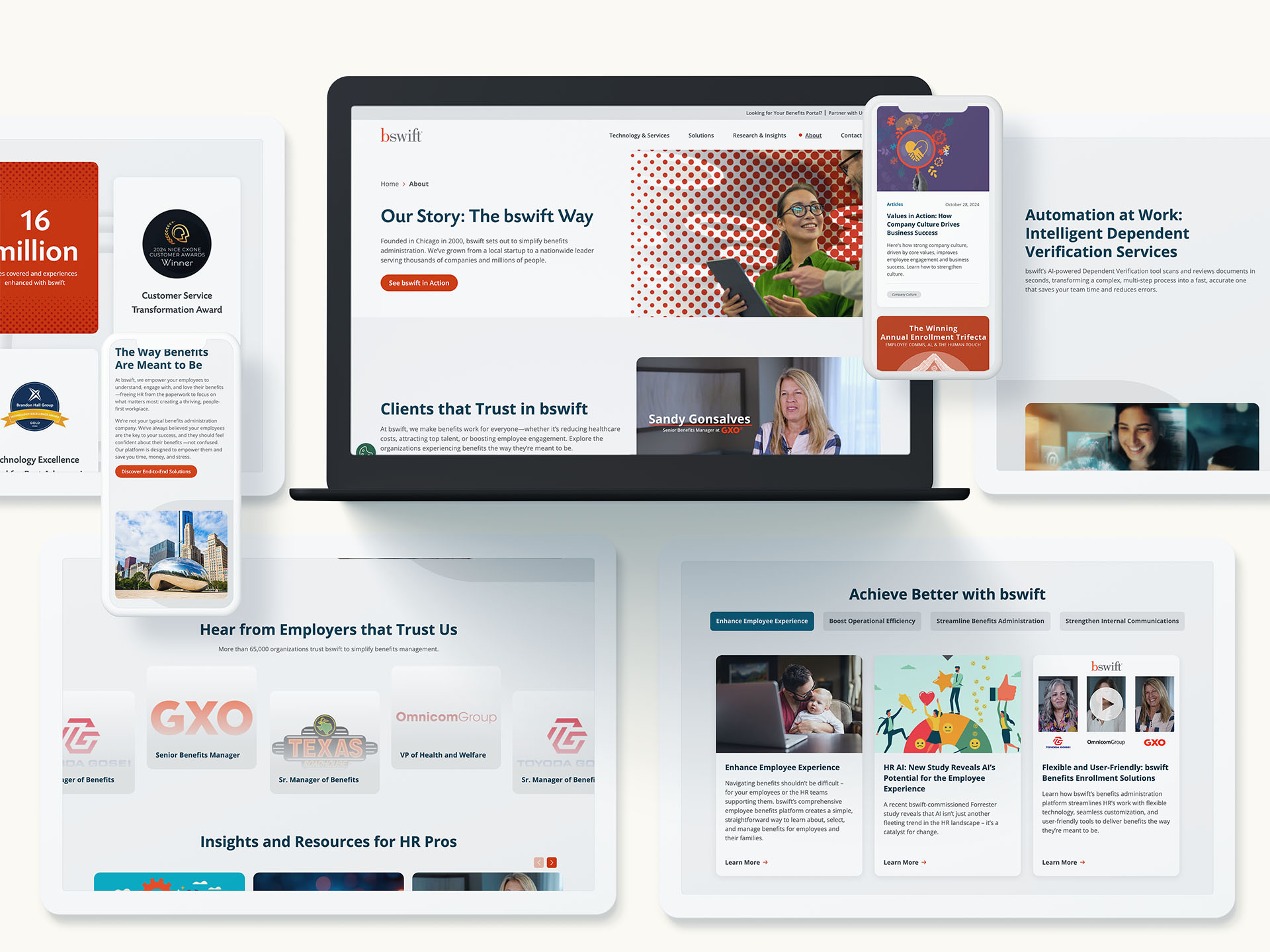
The Brand Consistency Challenge
Brand consistency is about more than logos and fonts. It’s about:
- Unified messaging pillars
- A shared tone of voice
- Consistent product naming conventions
- Visuals that reinforce brand DNA across all platforms
But this consistency gets complicated fast when:
- Teams in different regions are working in silos
- Local agencies interpret branding through their own lens
- Translation is treated as a final step, not a foundational consideration
In short, global expansion without a system invites fragmentation.
A Framework for Scalable Localization
To scale localization without losing control, brands need a structured but flexible framework. Here’s how leading companies do it:
1. Centralized Brand Guidelines, with Built-In Flexibility
Develop a global brand system that clearly defines:
- Core identity elements (logo usage, typography, color palettes)
- Voice and tone rules
- Messaging frameworks and brand pillars
But don’t stop there—include examples of how these can adapt for cultural relevance in local markets.
2. Establish Global vs. Local Ownership
Clarify what’s owned centrally (like key messaging, product naming, or logo integrity) versus what can be modified regionally (like calls to action, visuals, or campaign headlines). This helps local teams move fast without violating global standards.
3. Build a Cross-Functional Governance Model
Set up a process where brand, regional marketing, and localization teams can collaborate, review creative, and ensure alignment across launches.
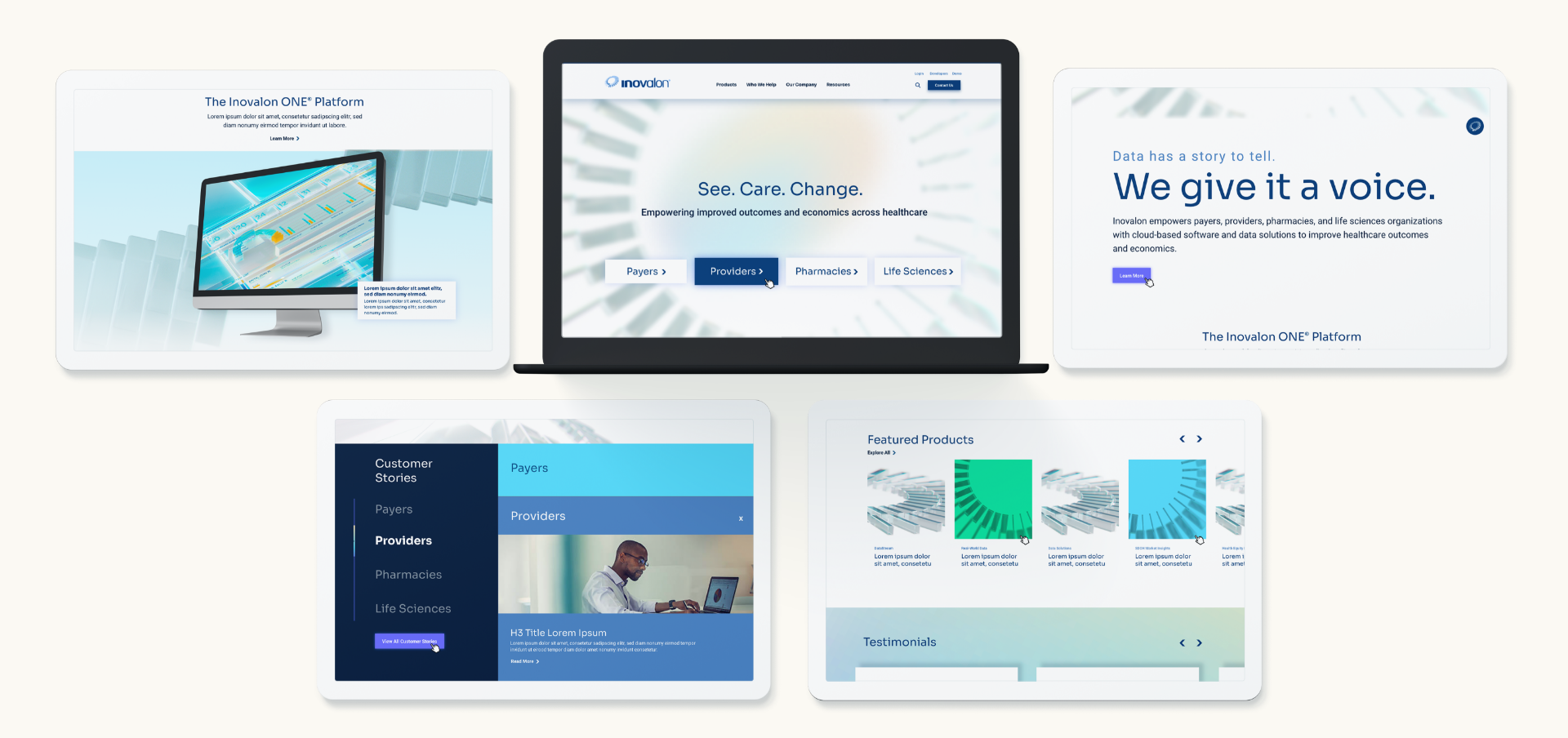
Cultural Relevance Is More Than Translation
Successful localization goes beyond language. It requires cultural fluency—understanding what resonates with each audience.
Consider:
- Adjusting tone and formality for regional expectations
- Rewriting—not just translating—taglines, CTAs, or value propositions
- Avoiding idioms, humor, or visuals that don’t translate across borders
The goal isn’t to replicate. It’s to reinterpret—in a way that maintains the core idea while landing more effectively in-market.
Creative + Operational Best Practices
Localization at scale requires both process and creativity. Here’s how to support both:
- Design reusable creative systems: Create modular templates for web, email, paid media, and social assets that local teams can customize within guardrails.
- Use a global content management system (CMS): A CMS that supports multi-language site versions helps centralize oversight while enabling regional flexibility.
- Invest in a DAM and translation management system (TMS): Organize brand assets and enable consistent translations that are version-controlled, searchable, and easily distributed.
- Train your teams: Provide onboarding and ongoing brand training for regional marketers, translators, and agency partners.
- Monitor and optimize: Use analytics to assess how localized content performed by region—and feed insights back into your system.
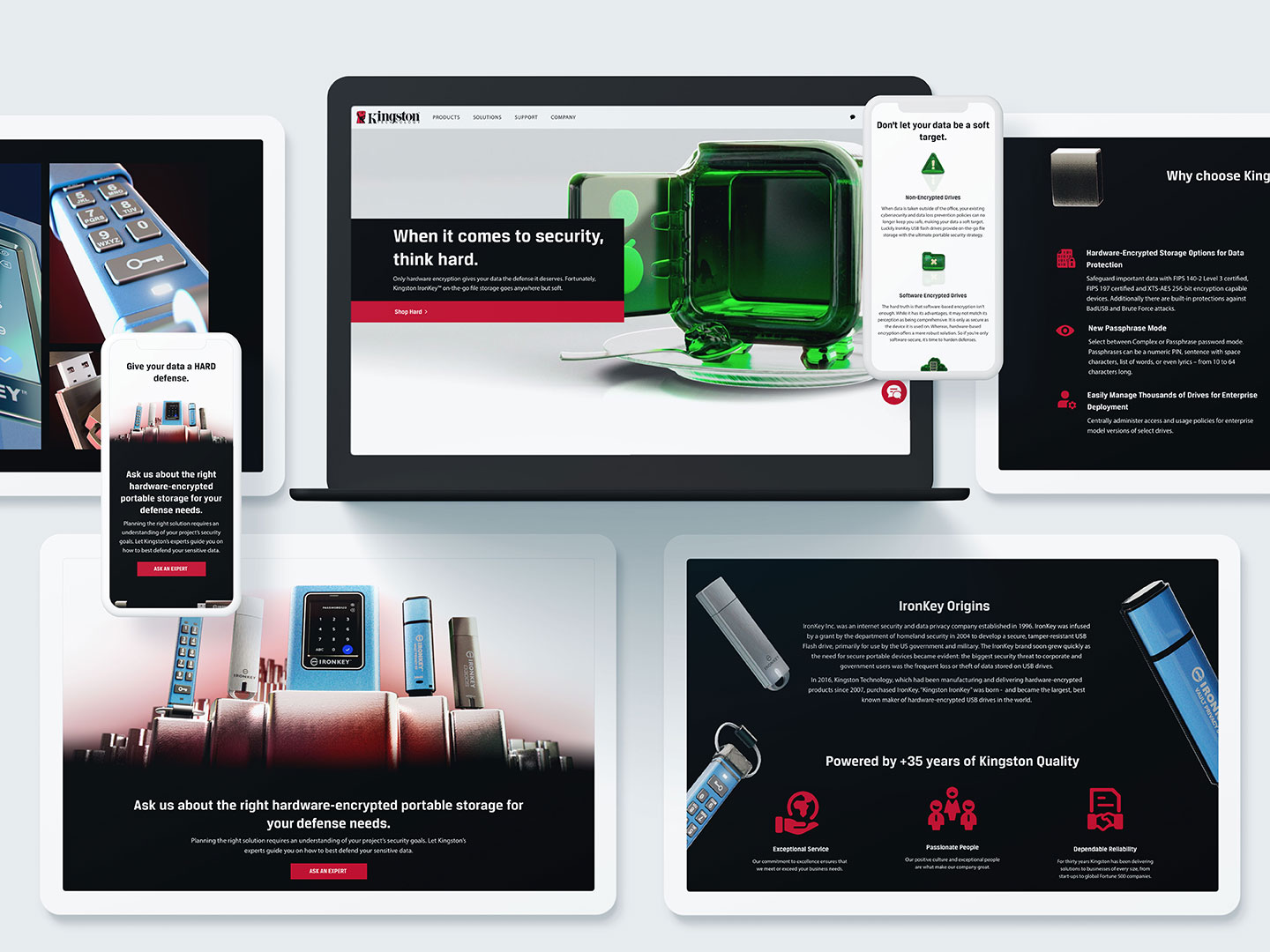
The Payoff: A Brand That Travels Well
When you balance consistency with cultural nuance, your brand becomes:
- More trustworthy – Familiarity builds credibility.
- More relatable – Regional teams feel empowered to connect with local audiences.
- More agile – Launches become faster and more repeatable, with fewer missteps.
It’s not just about protecting your brand—it’s about amplifying it across every market you touch.
Need a Global Brand That Feels Local Everywhere?
Bluetext helps brands develop scalable localization strategies that maintain identity while enabling adaptation. From building global campaign toolkits to implementing multi-language websites and brand governance systems, we help you stay consistent—without being rigid.
Contact us to learn how we can help your brand speak the local language, at scale.